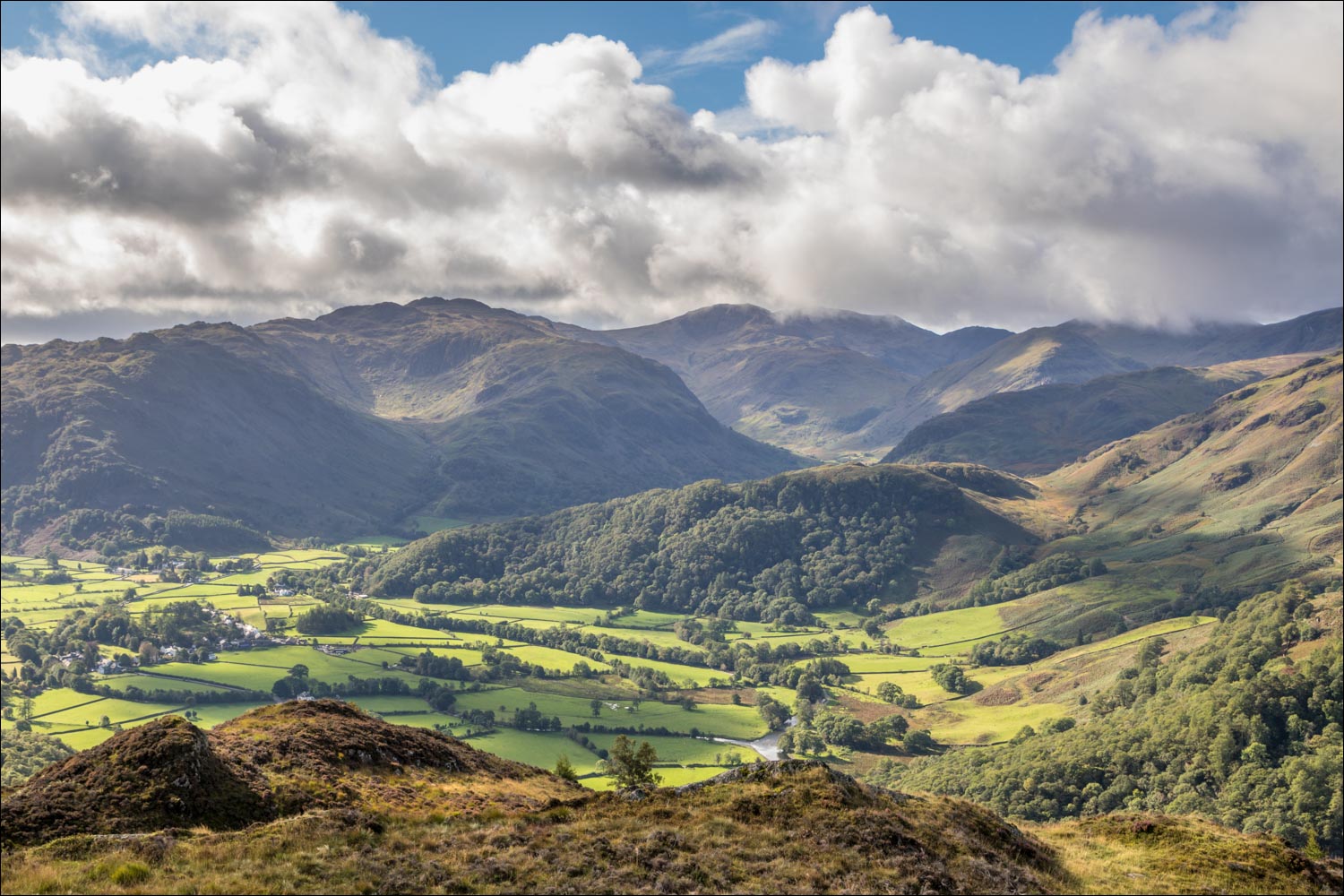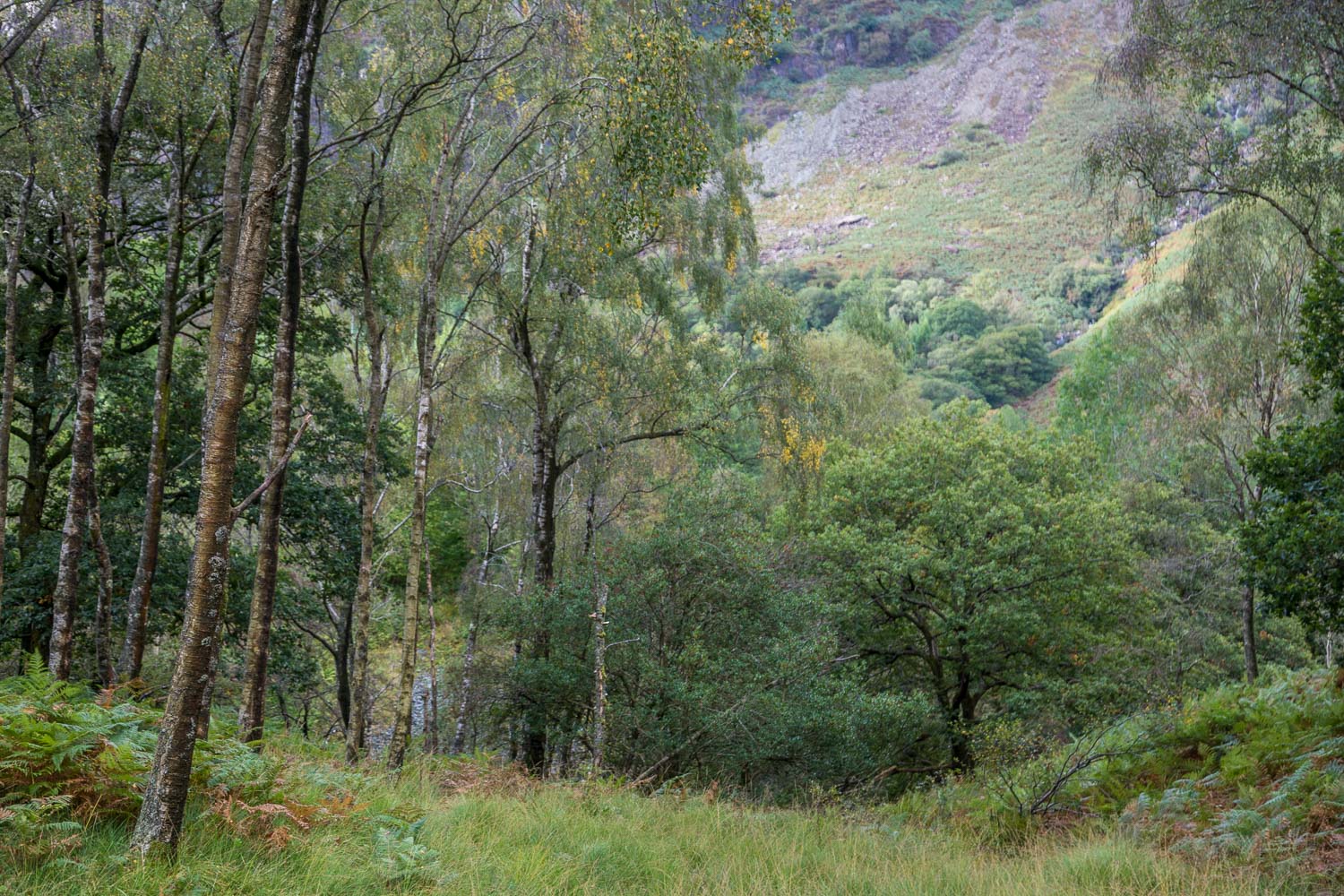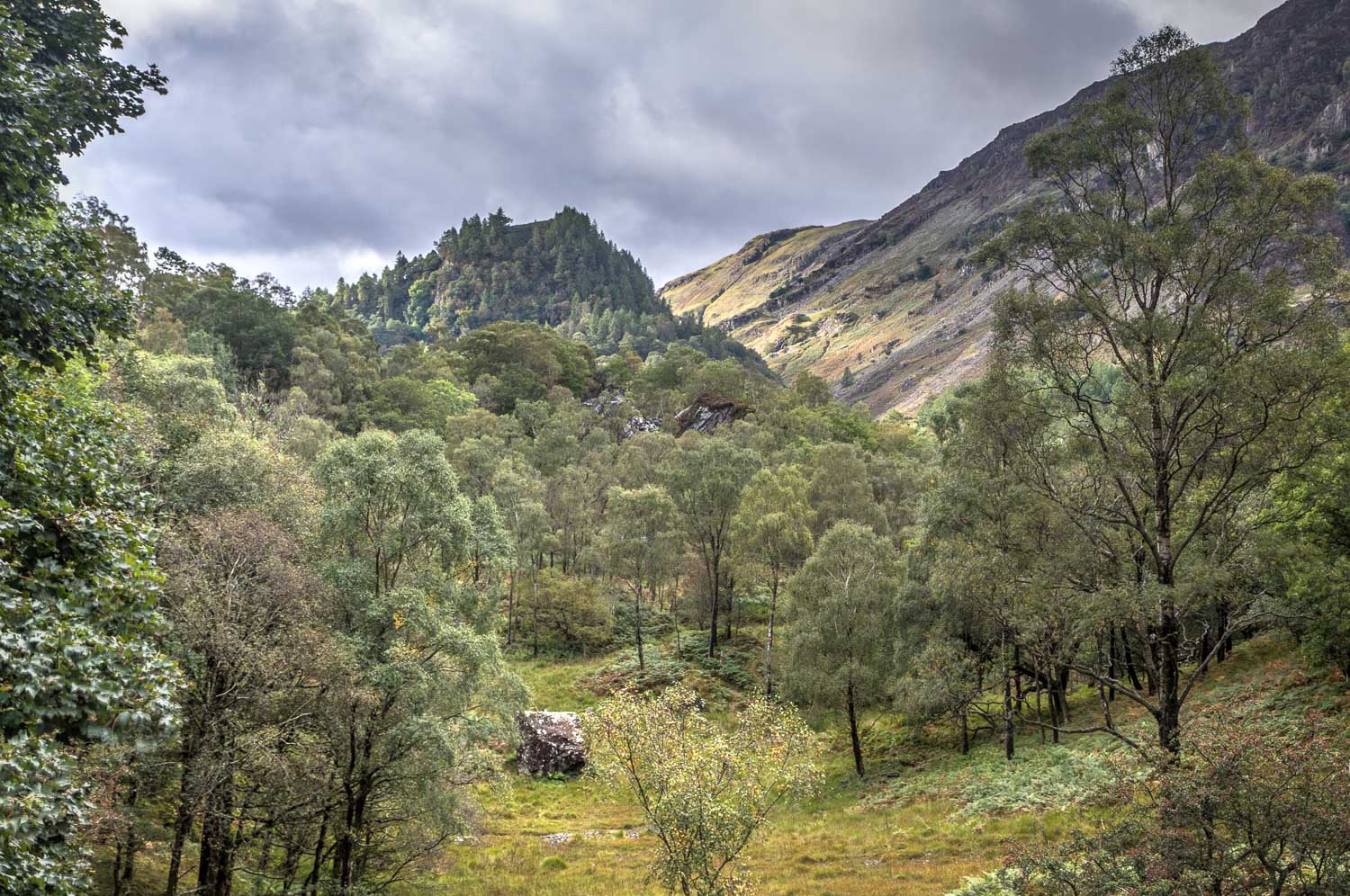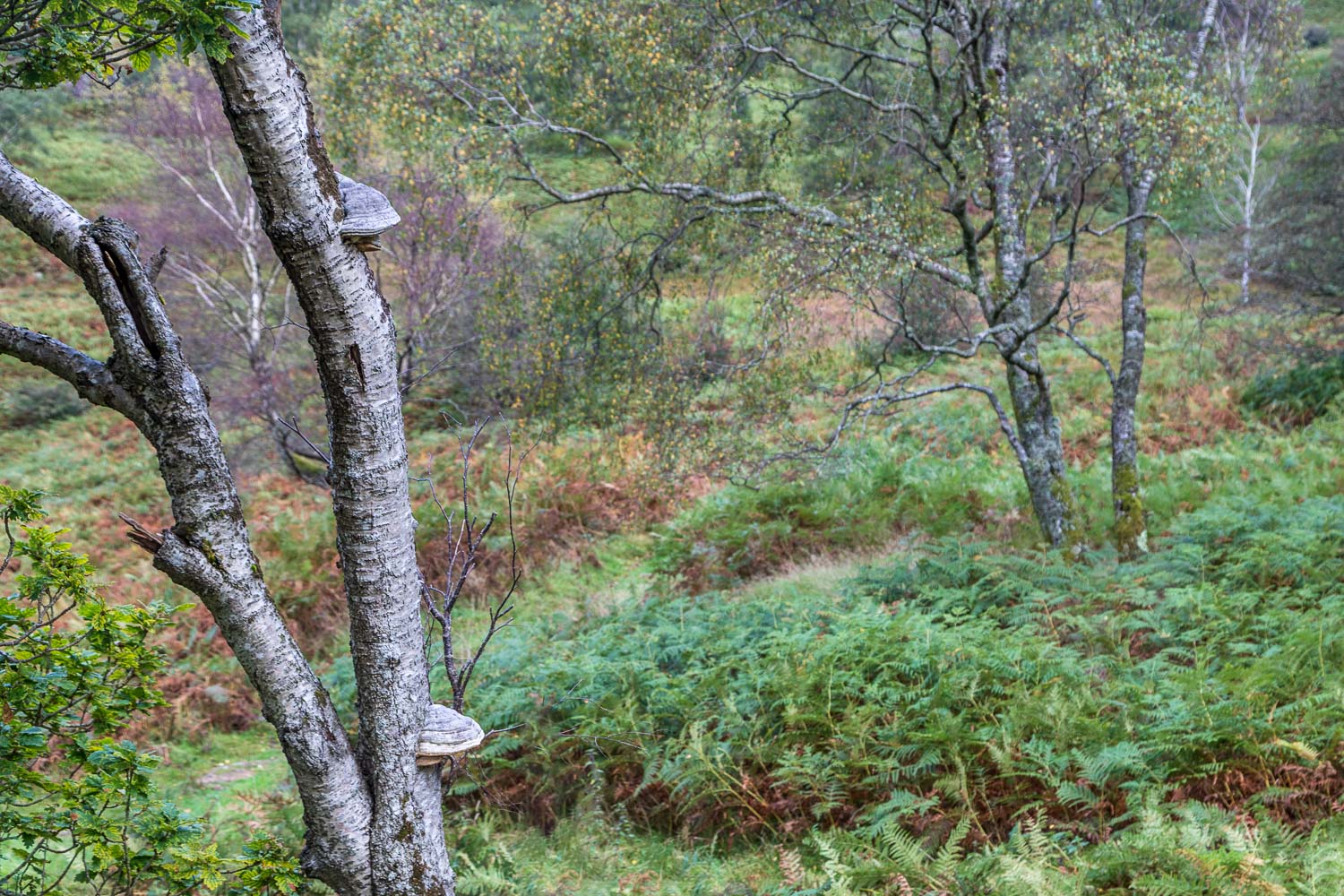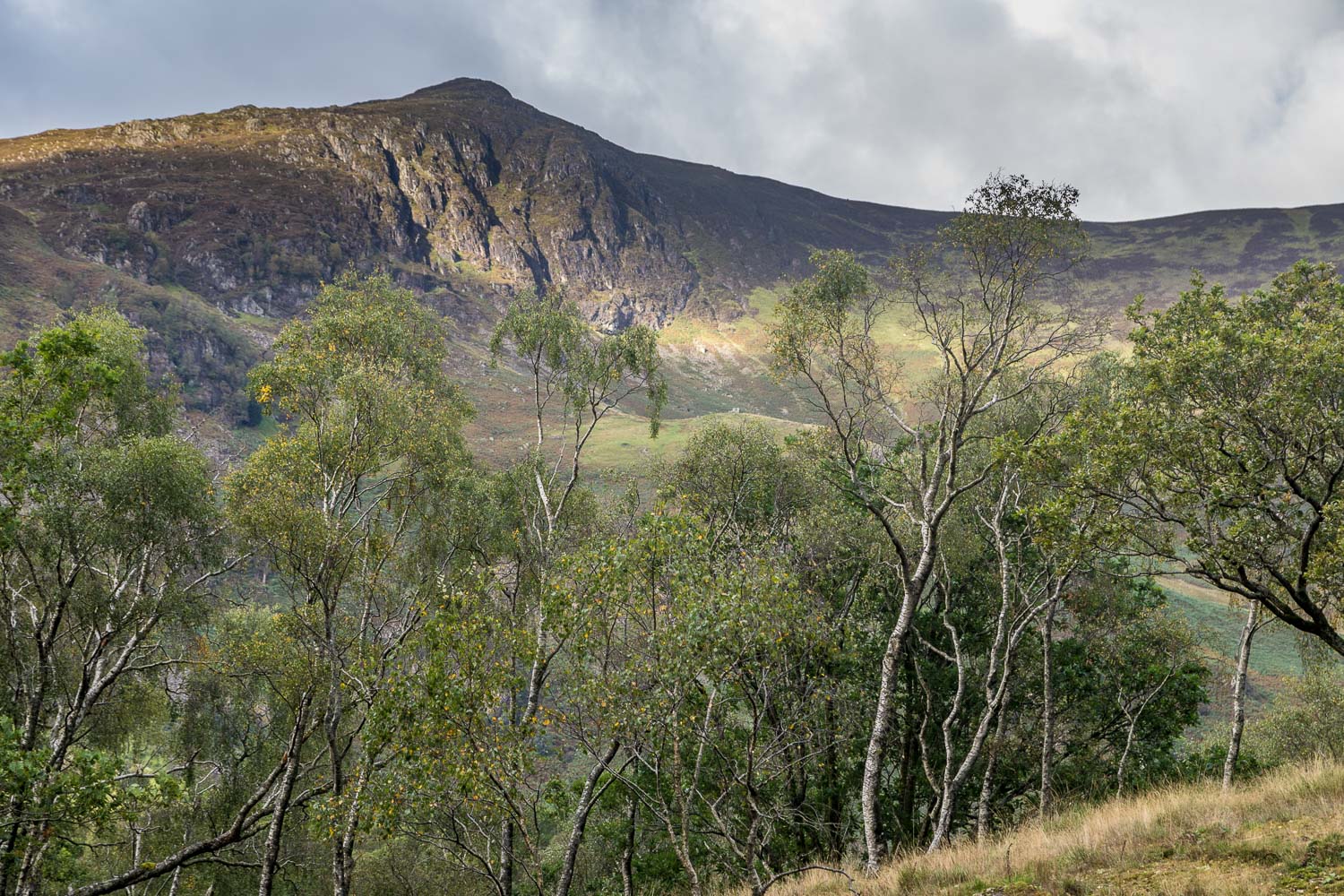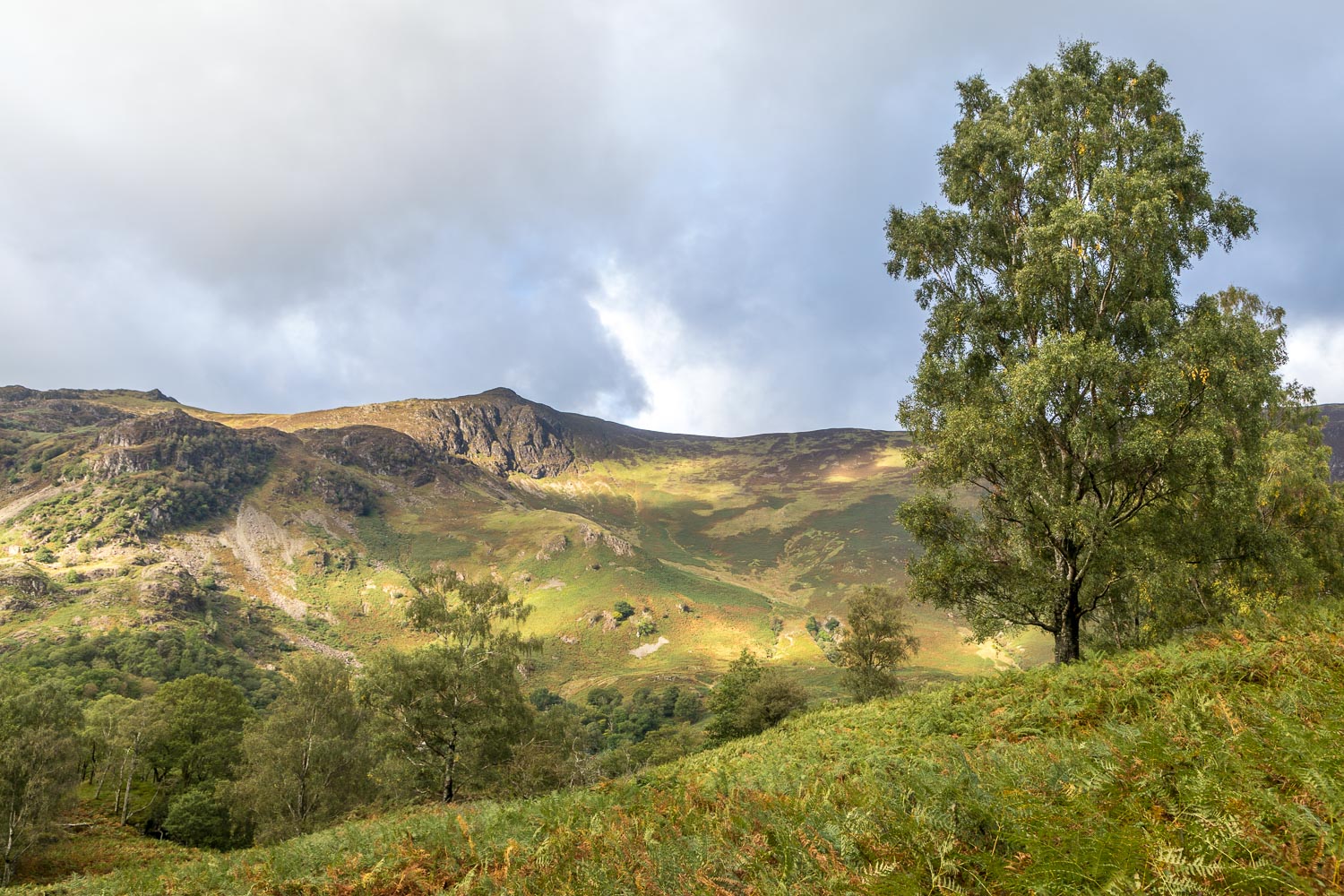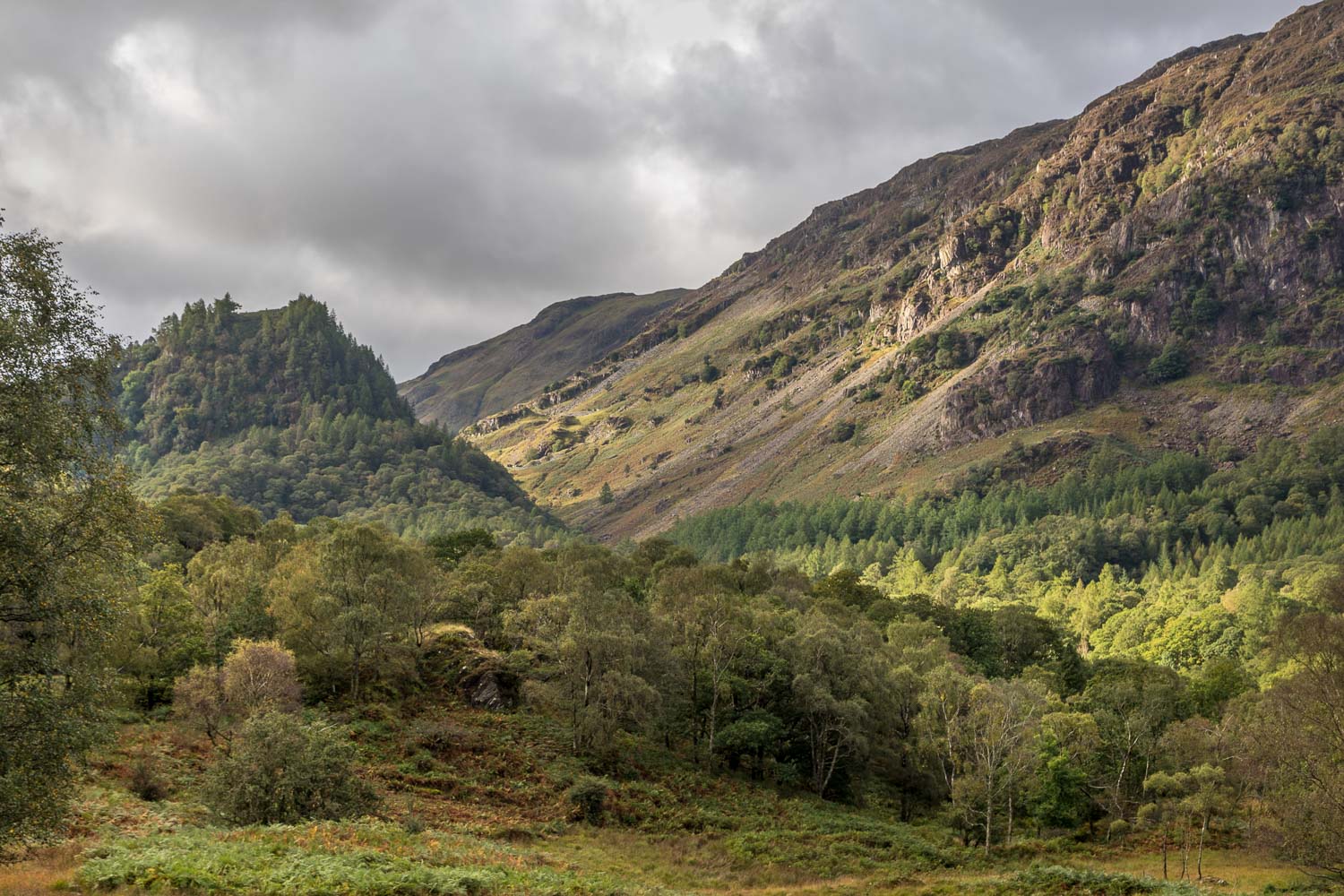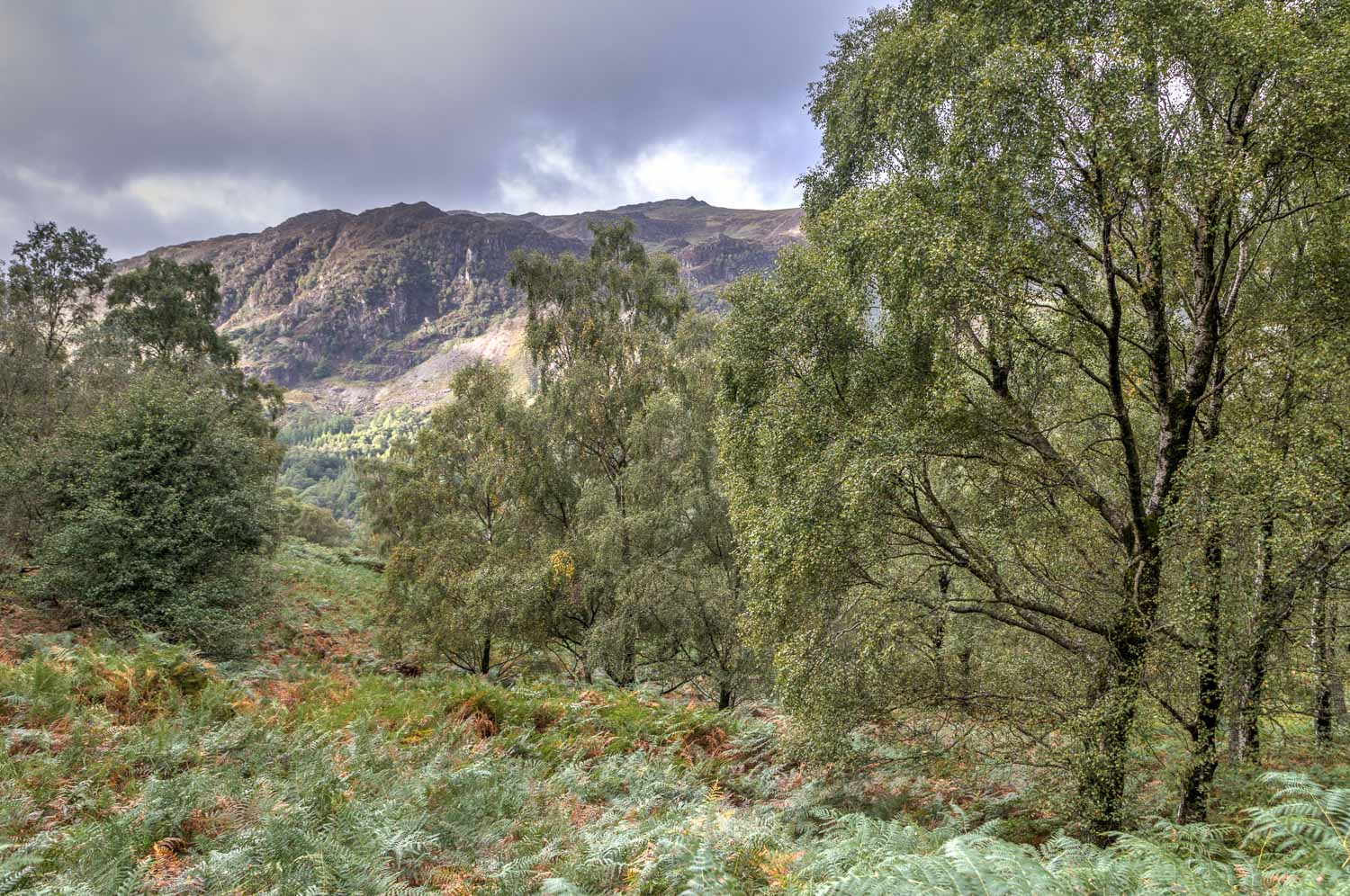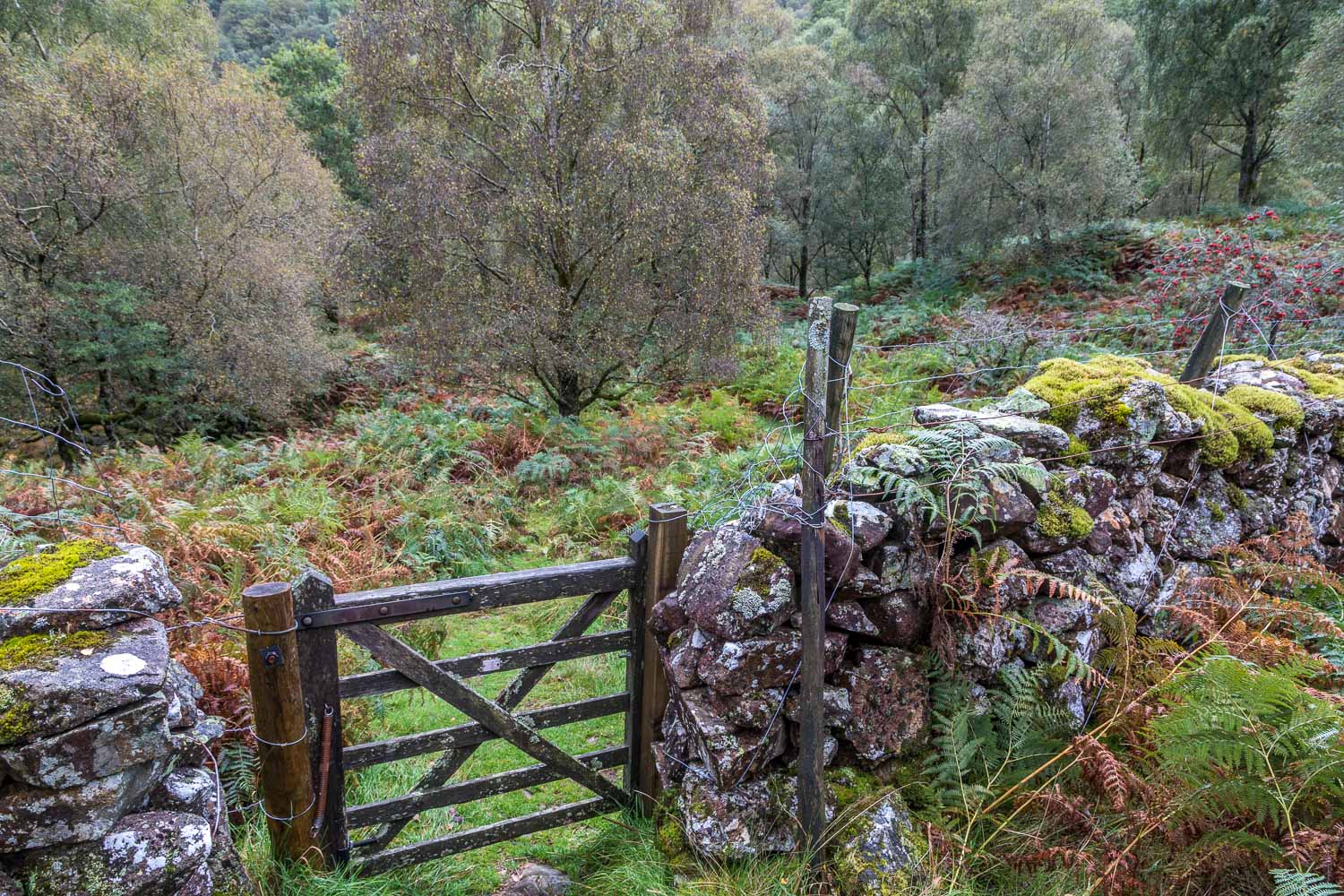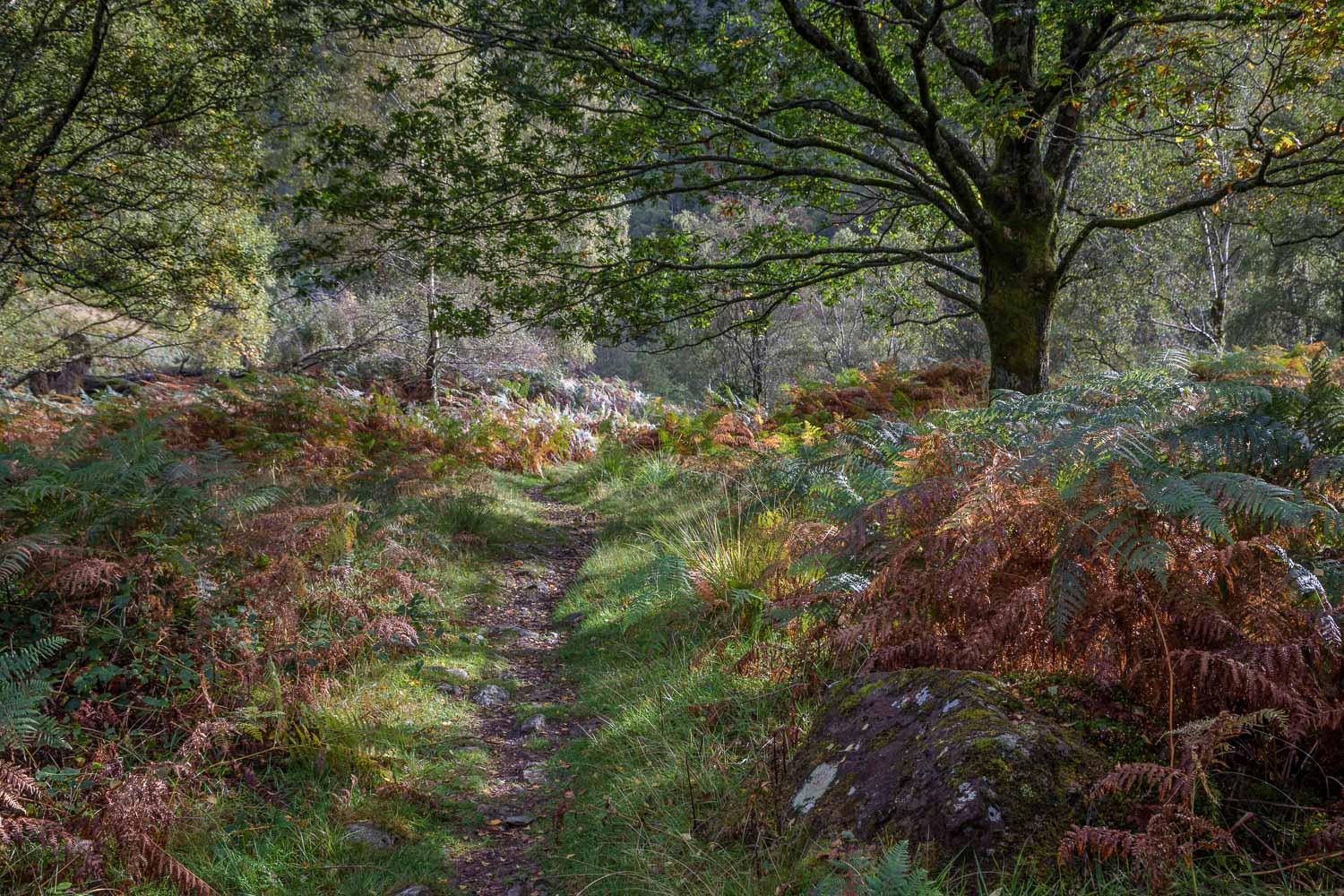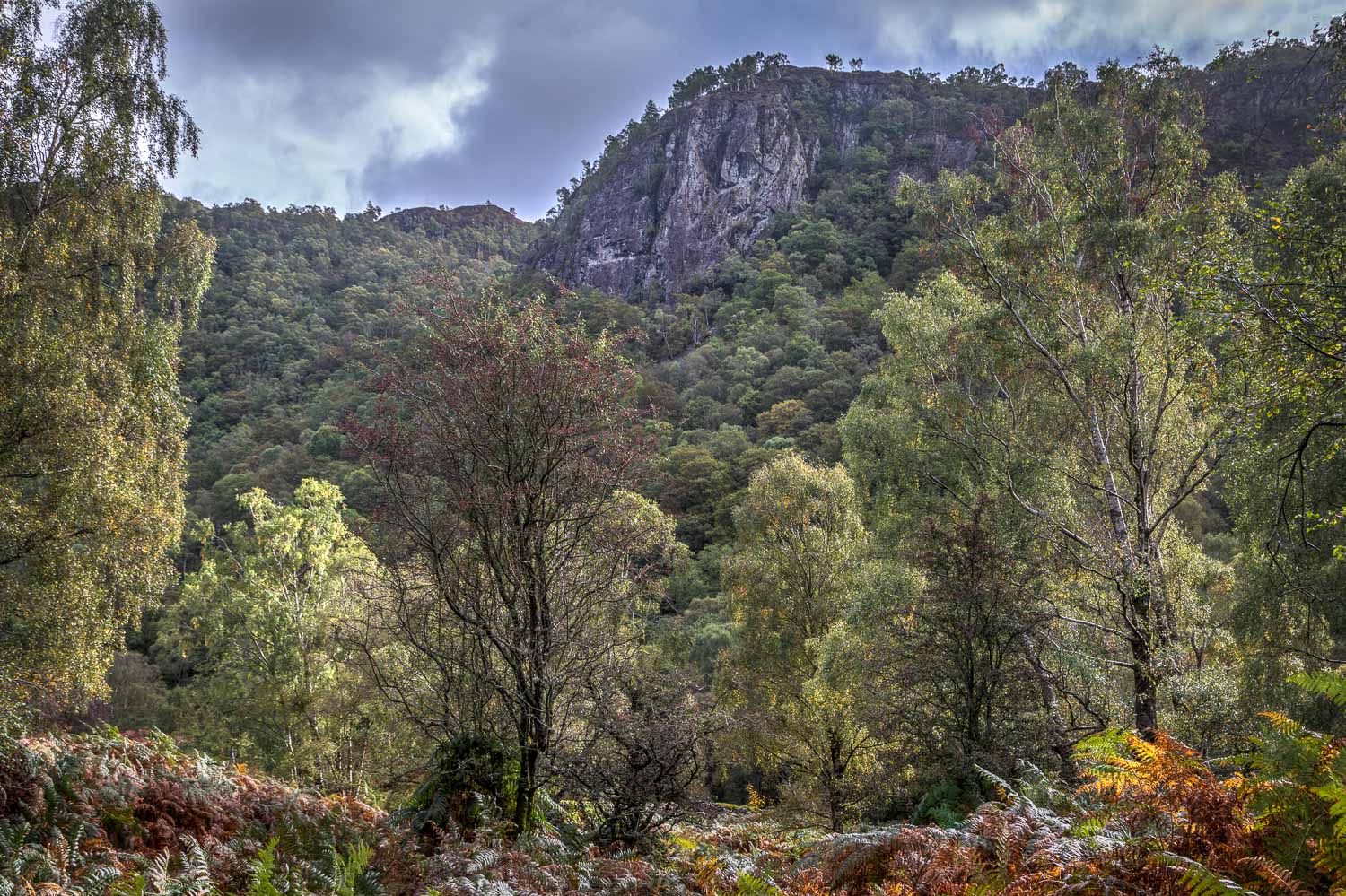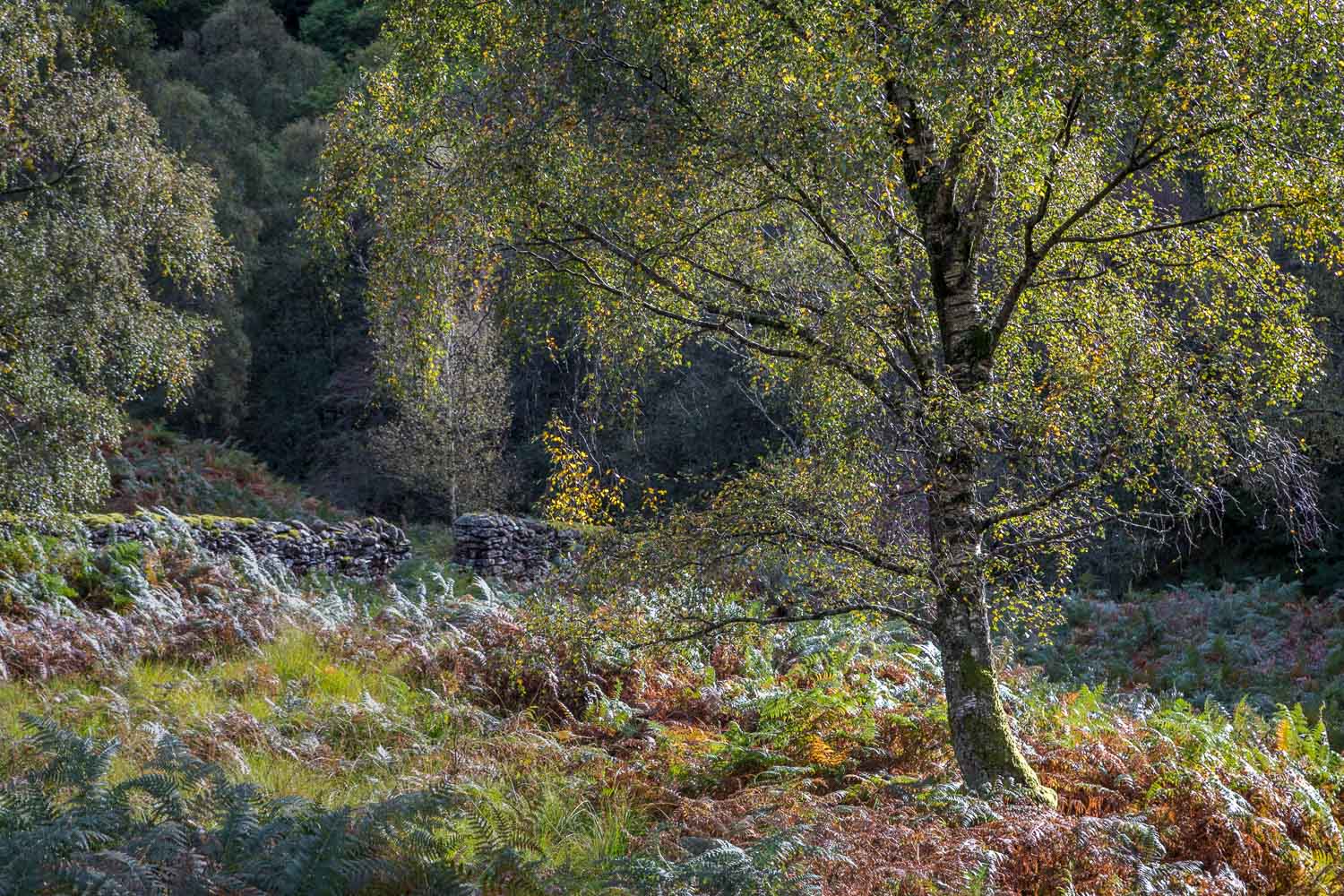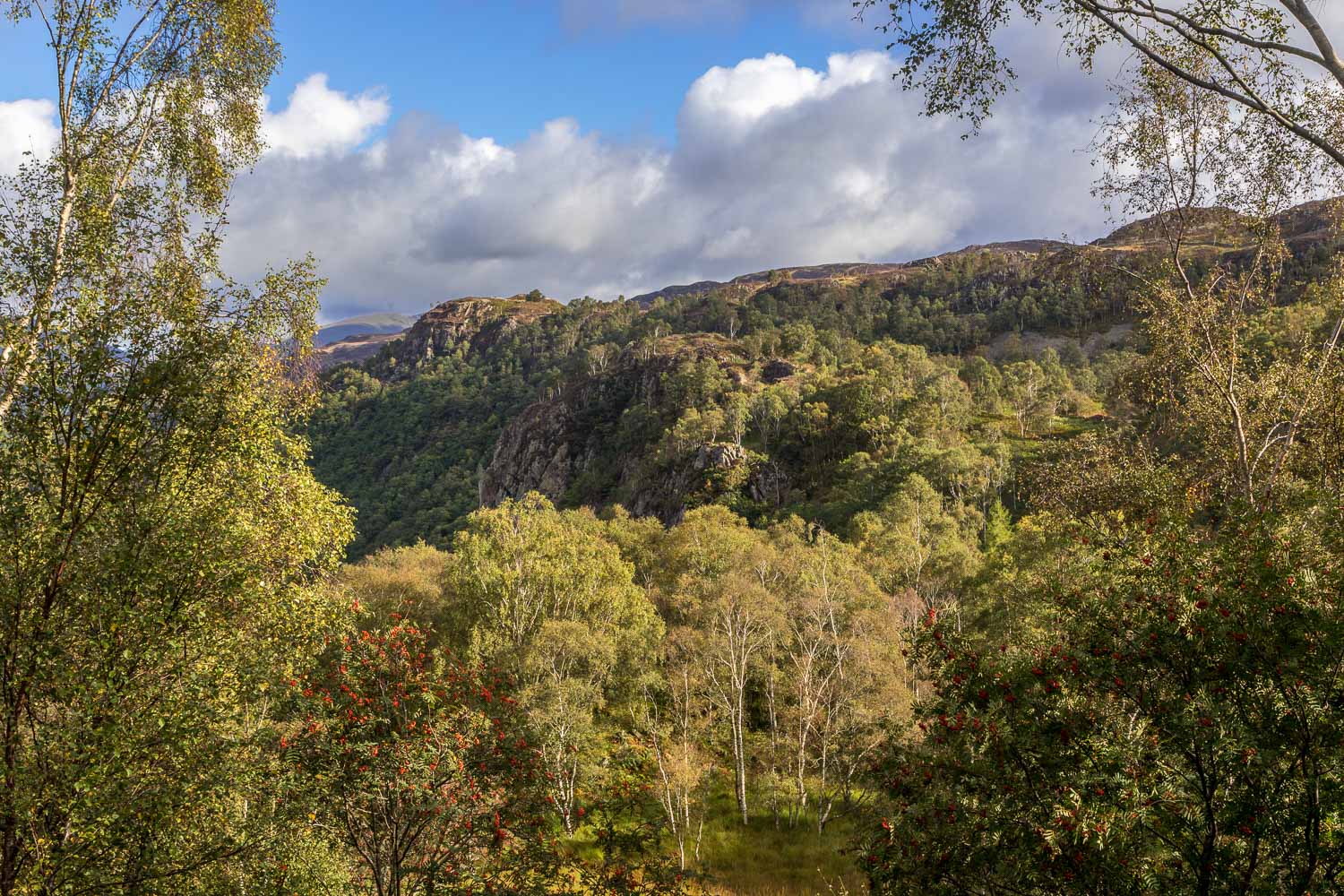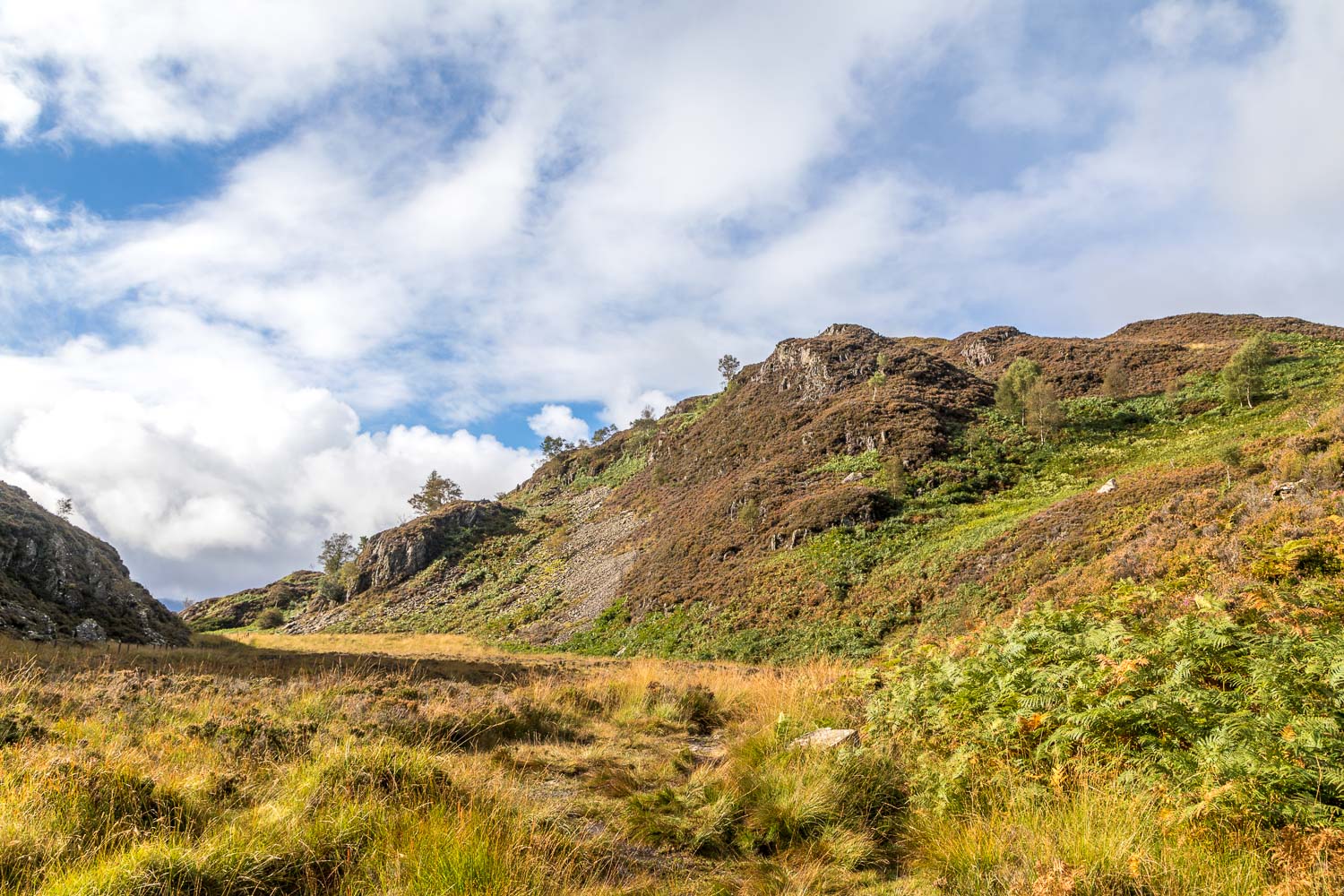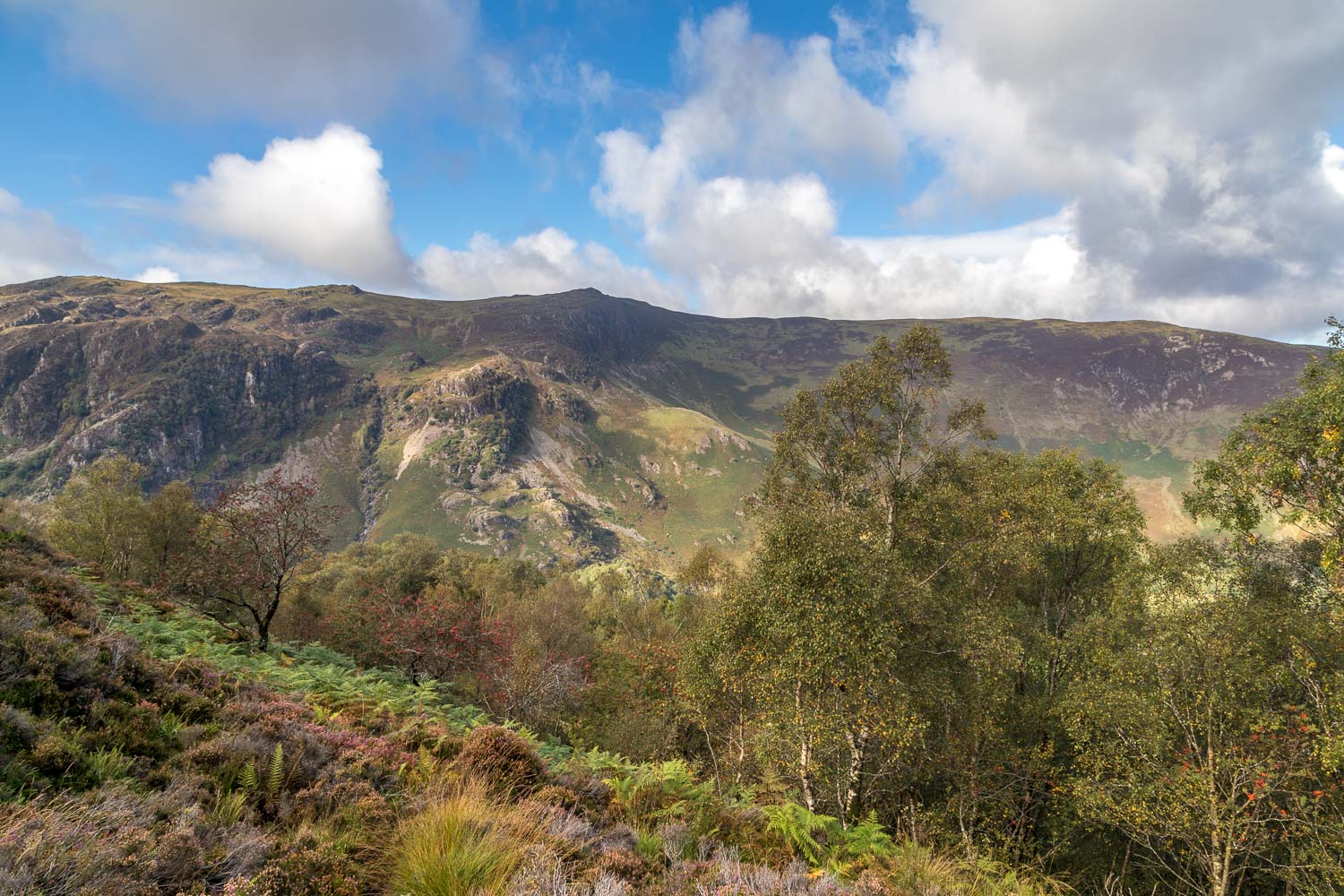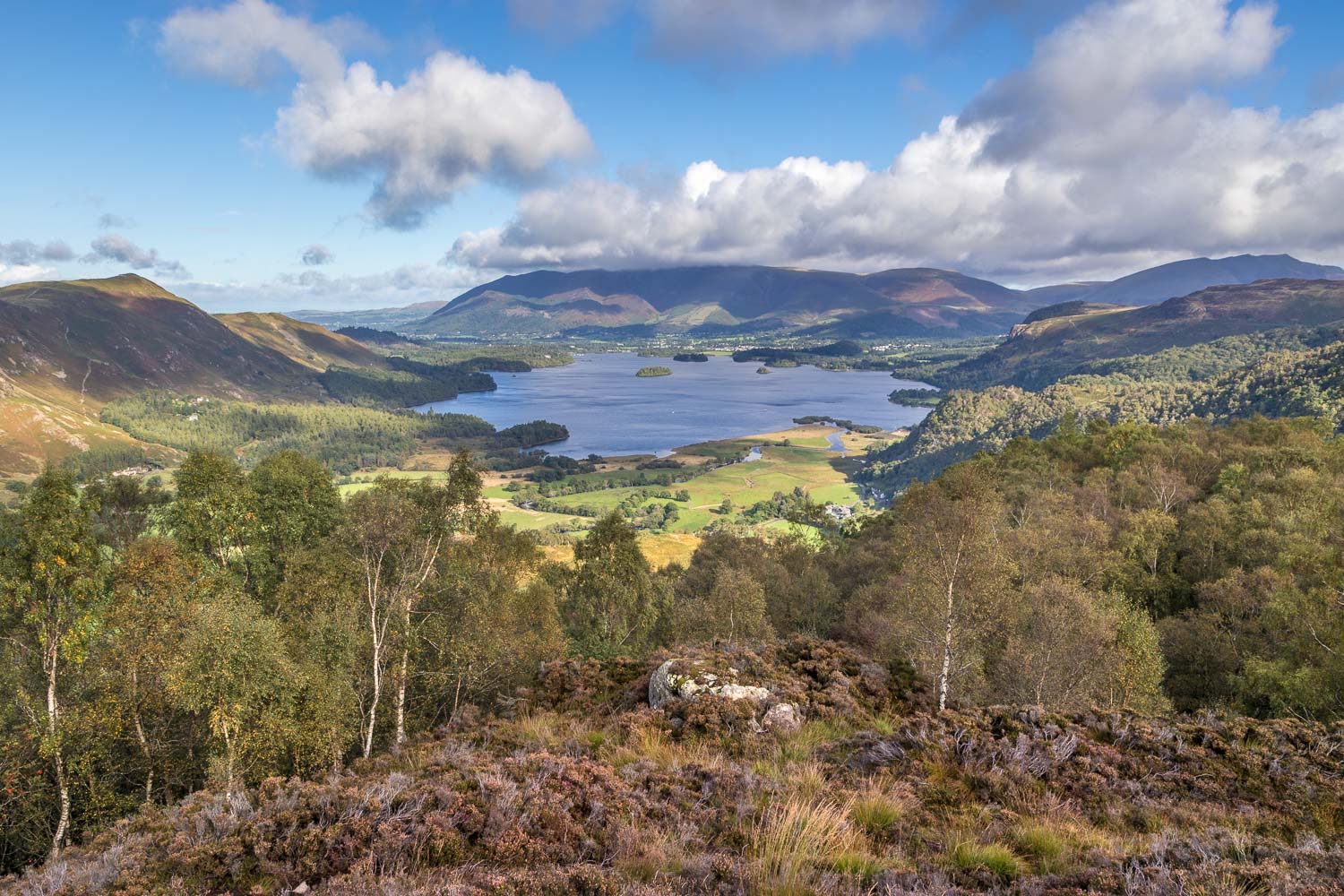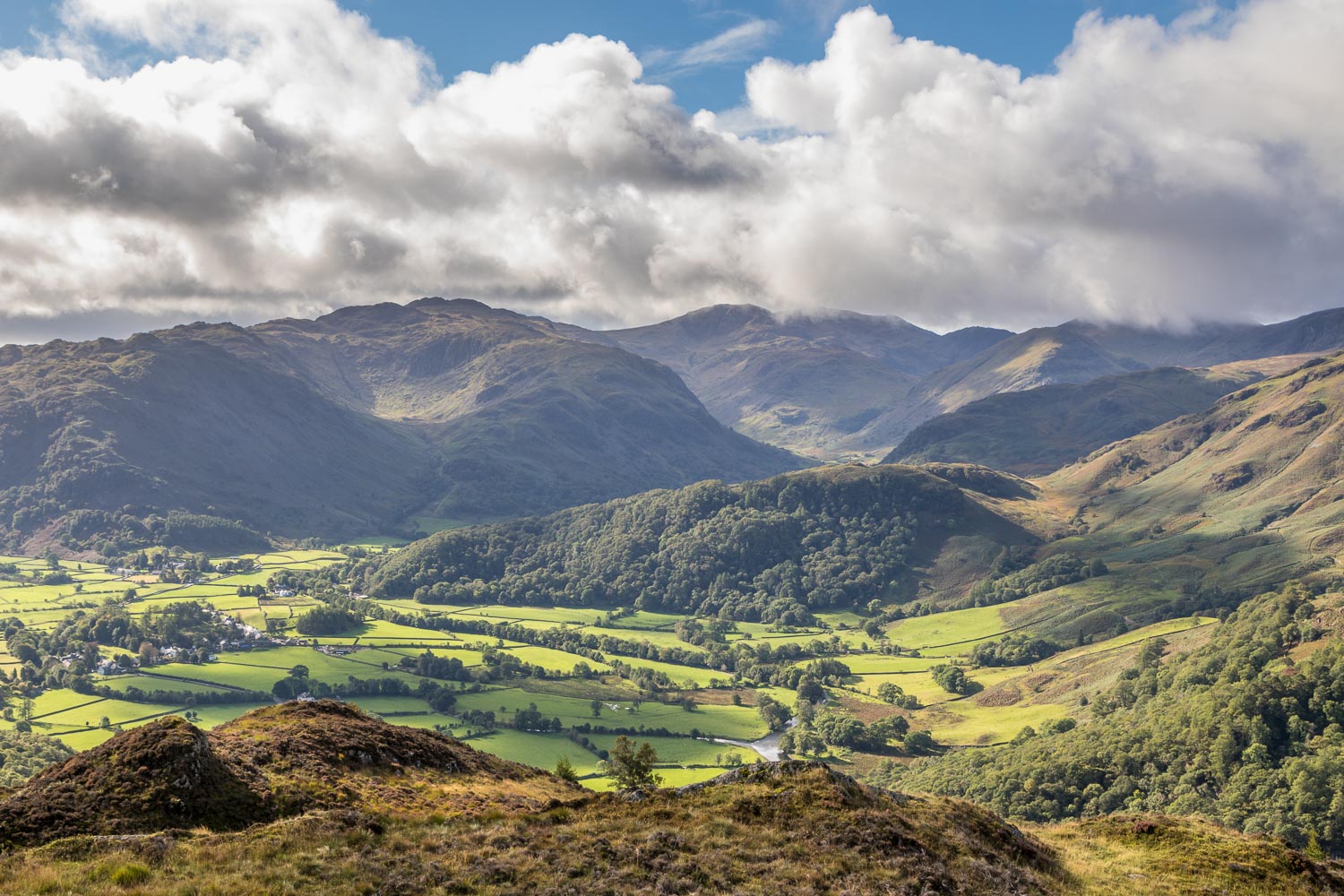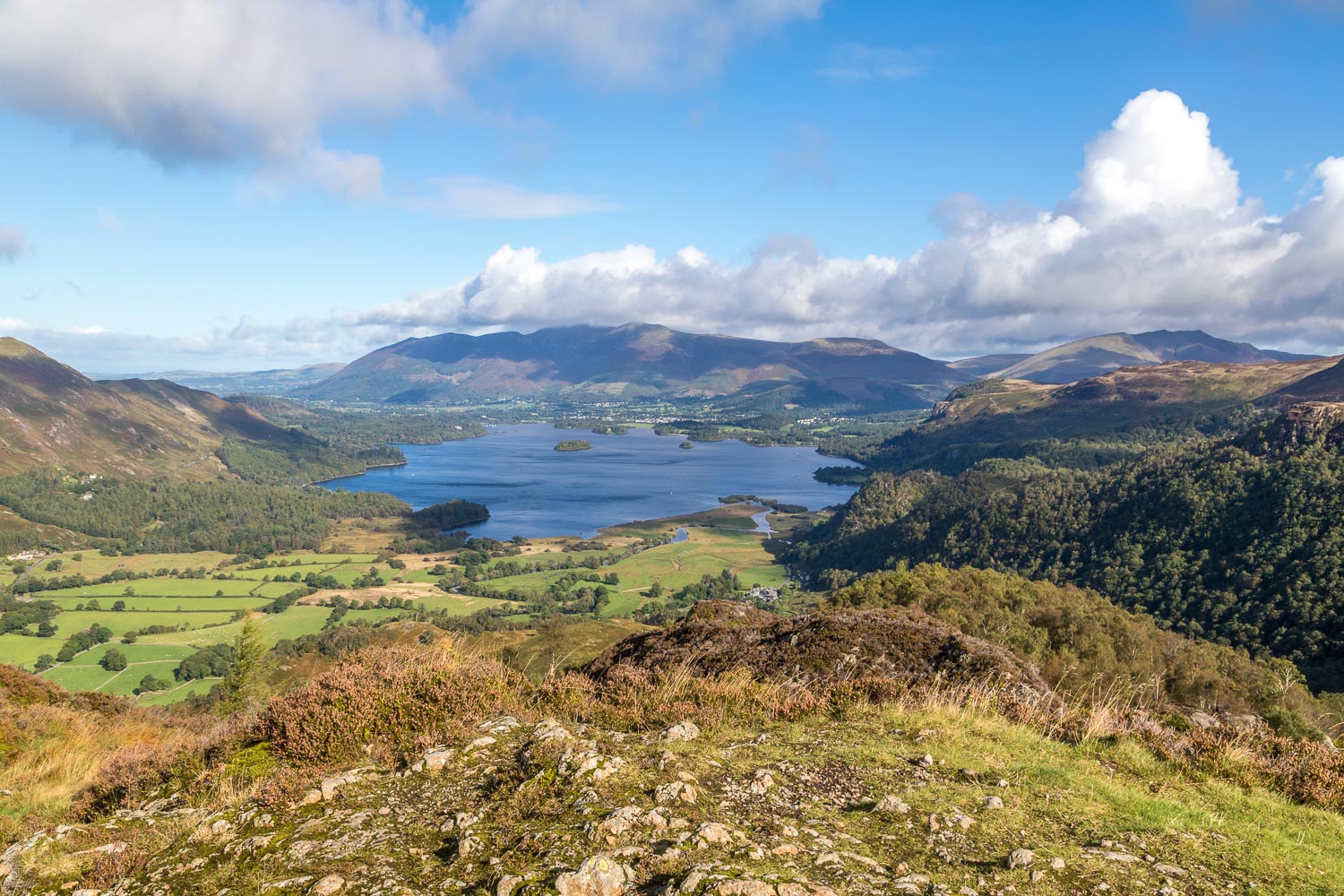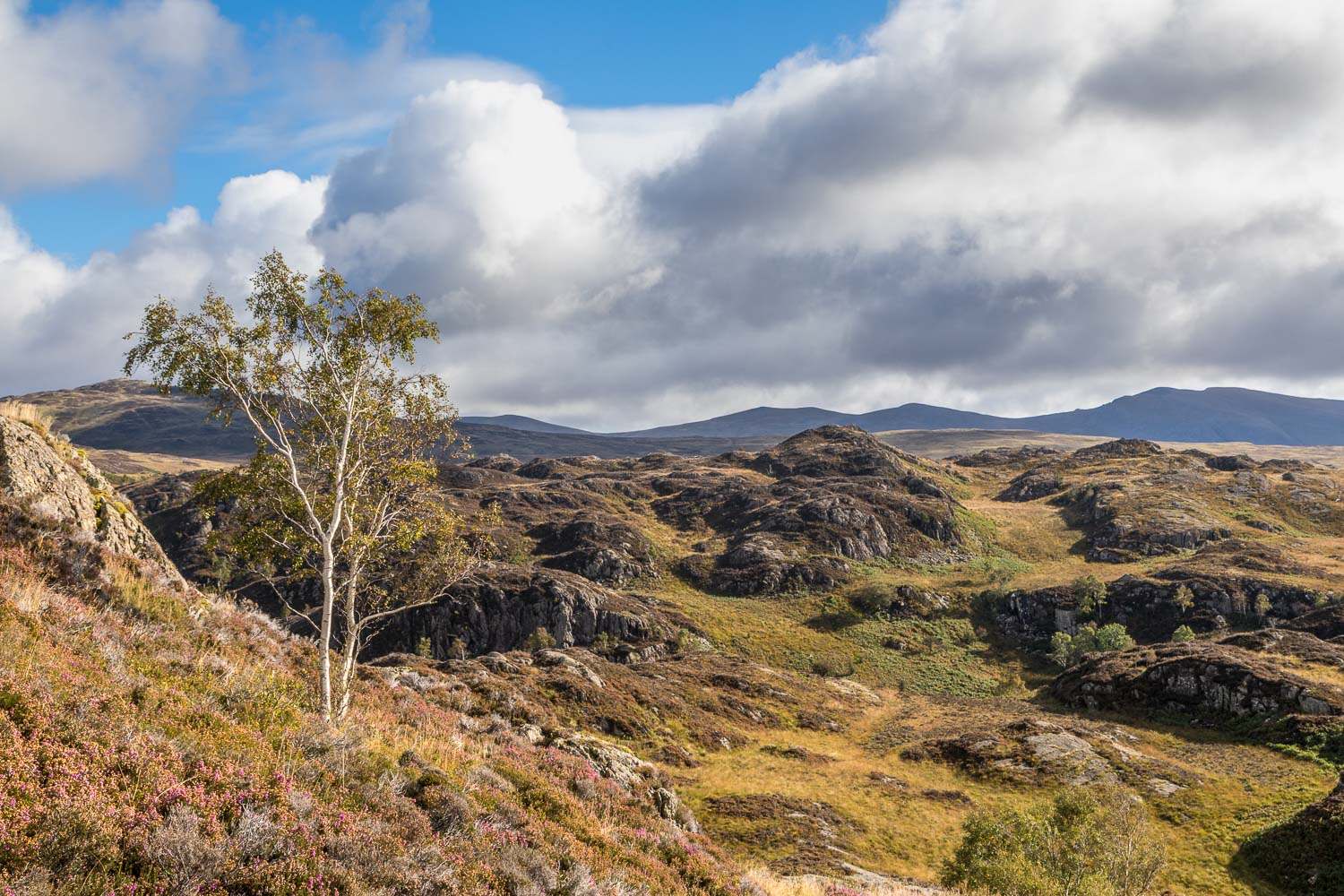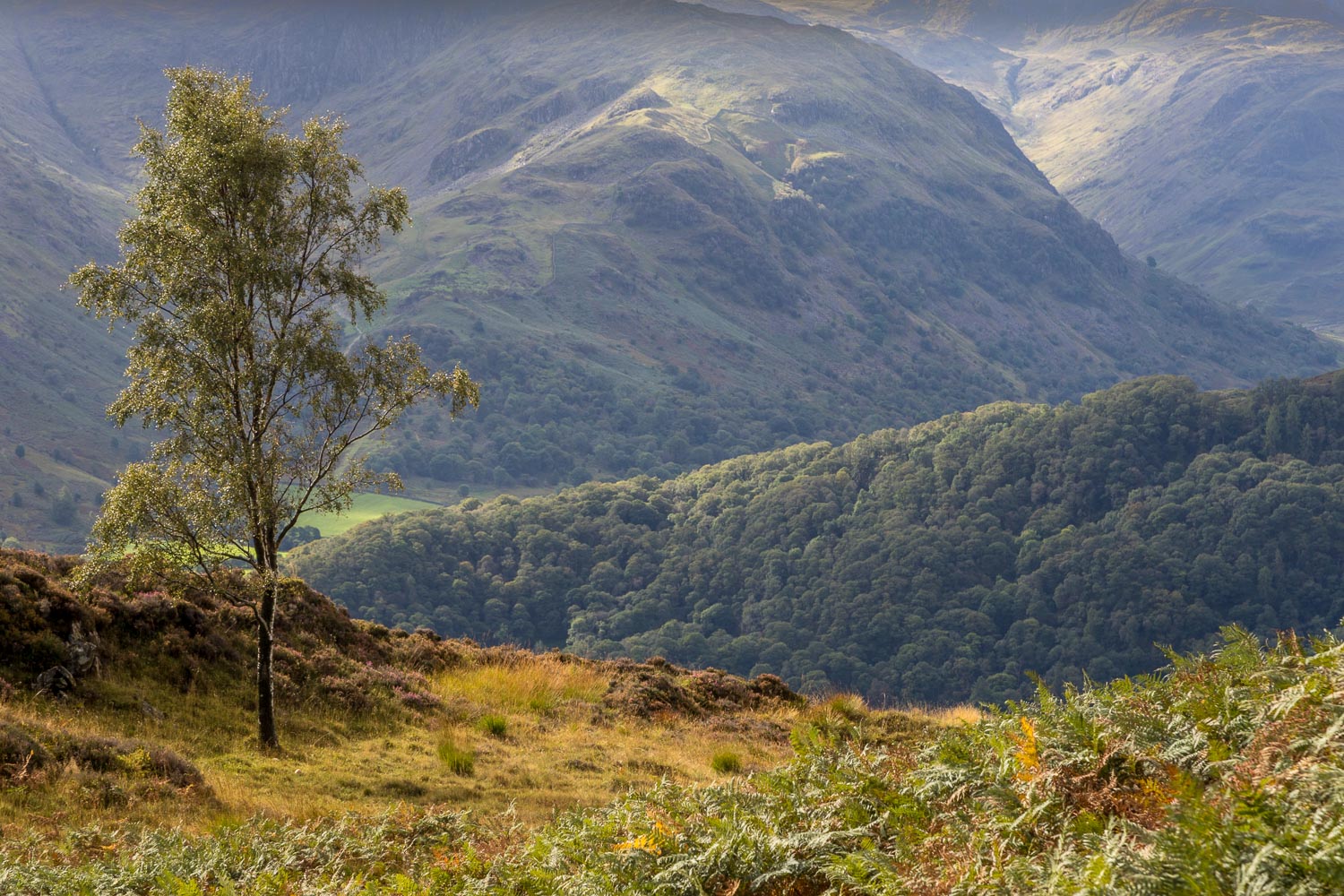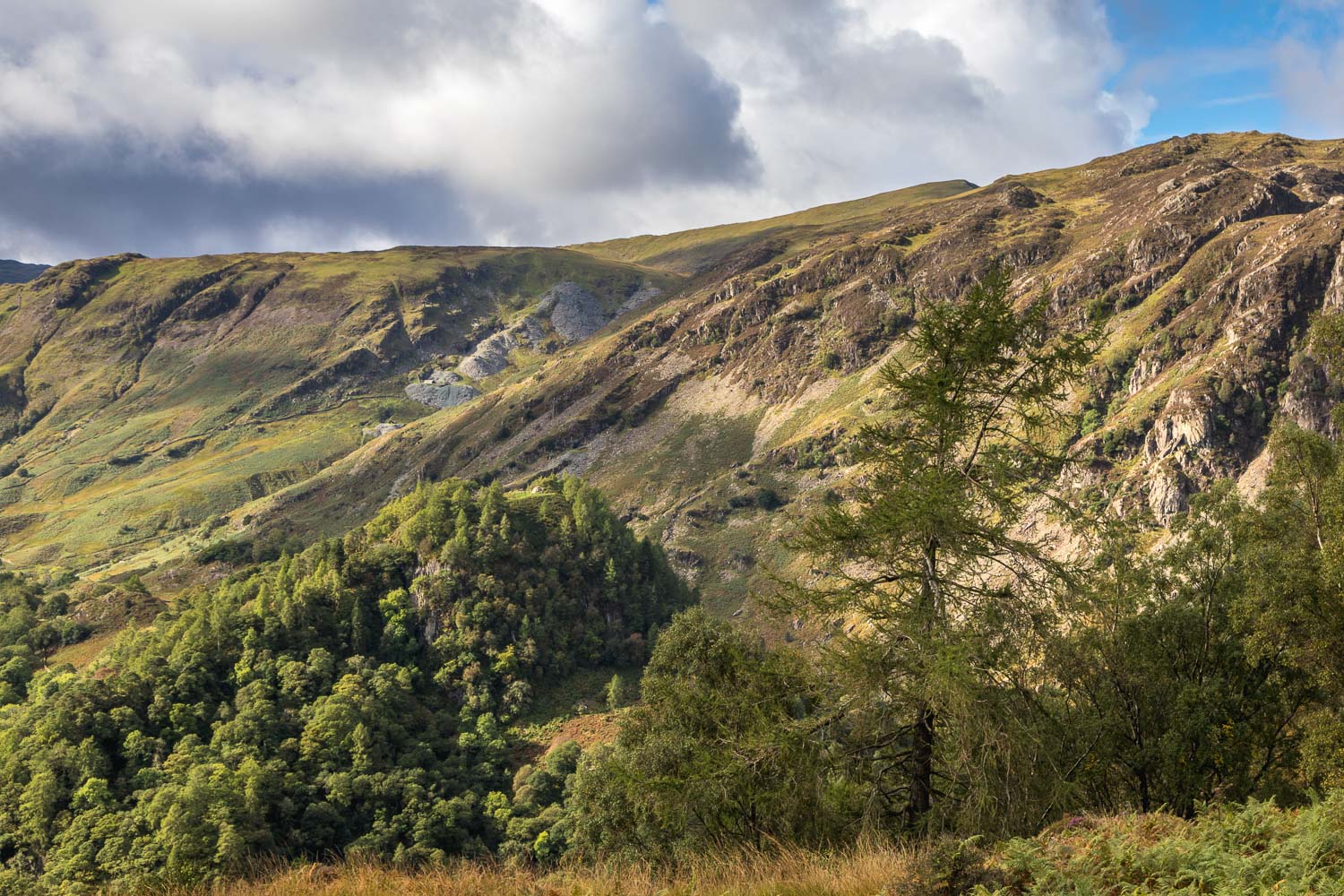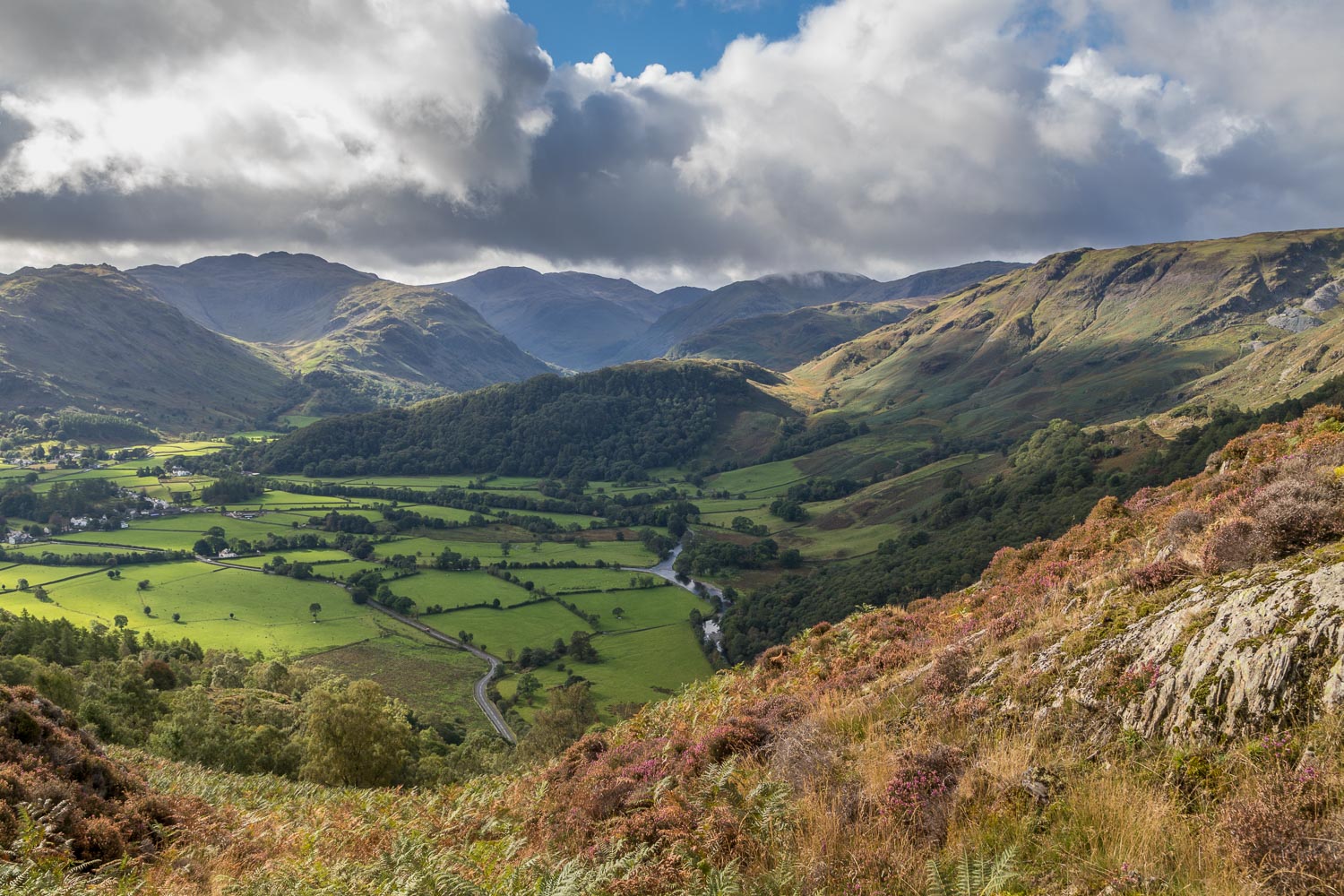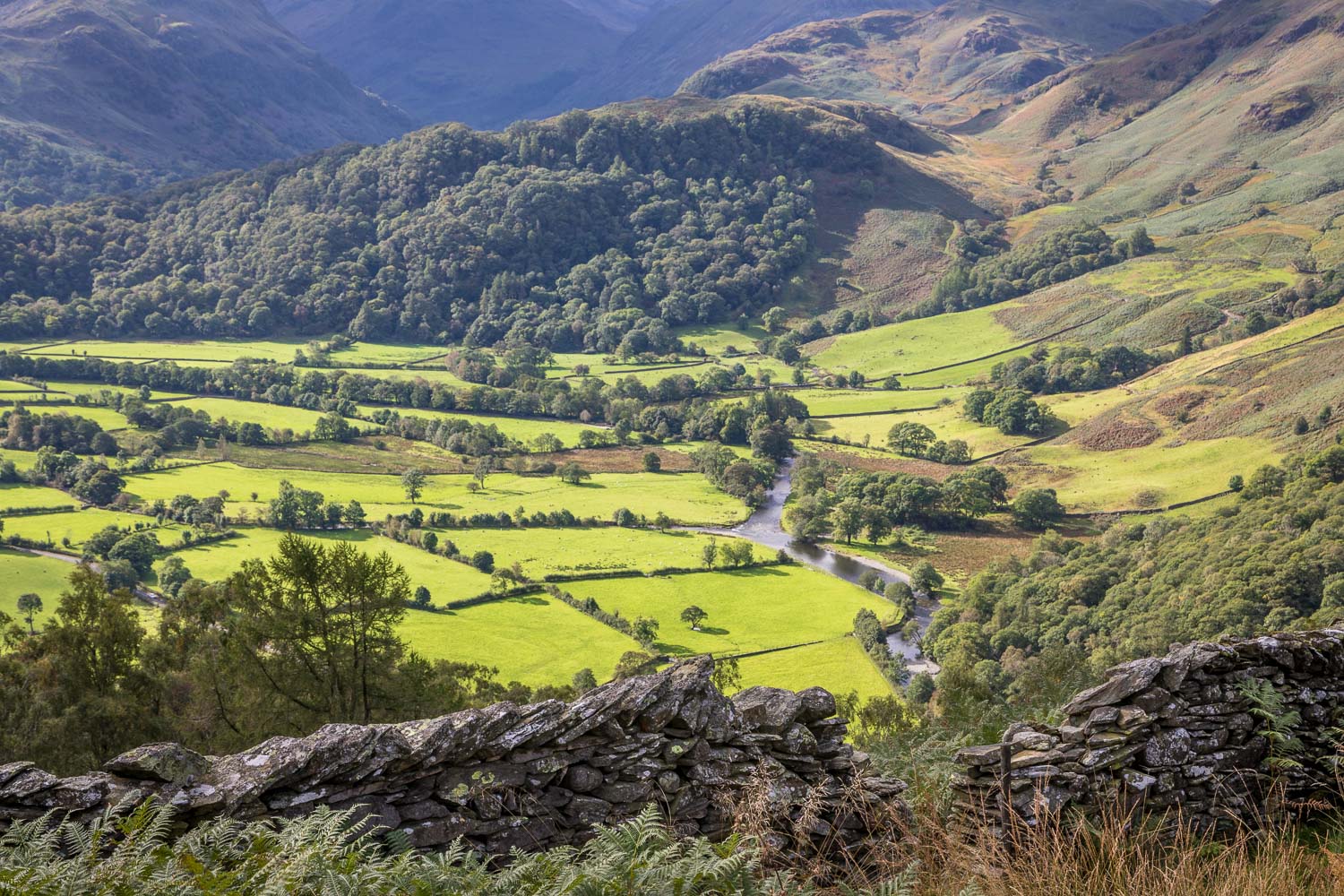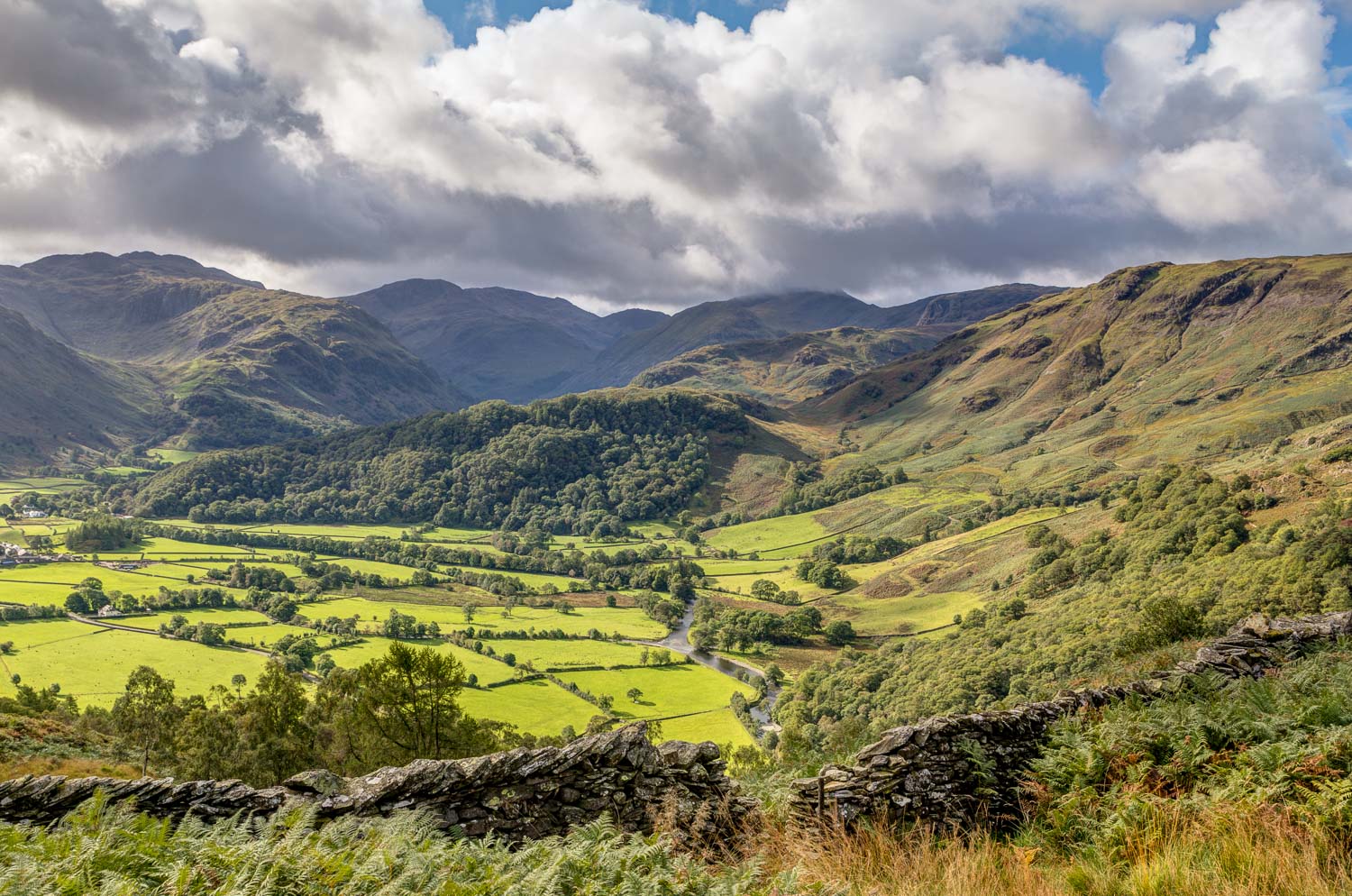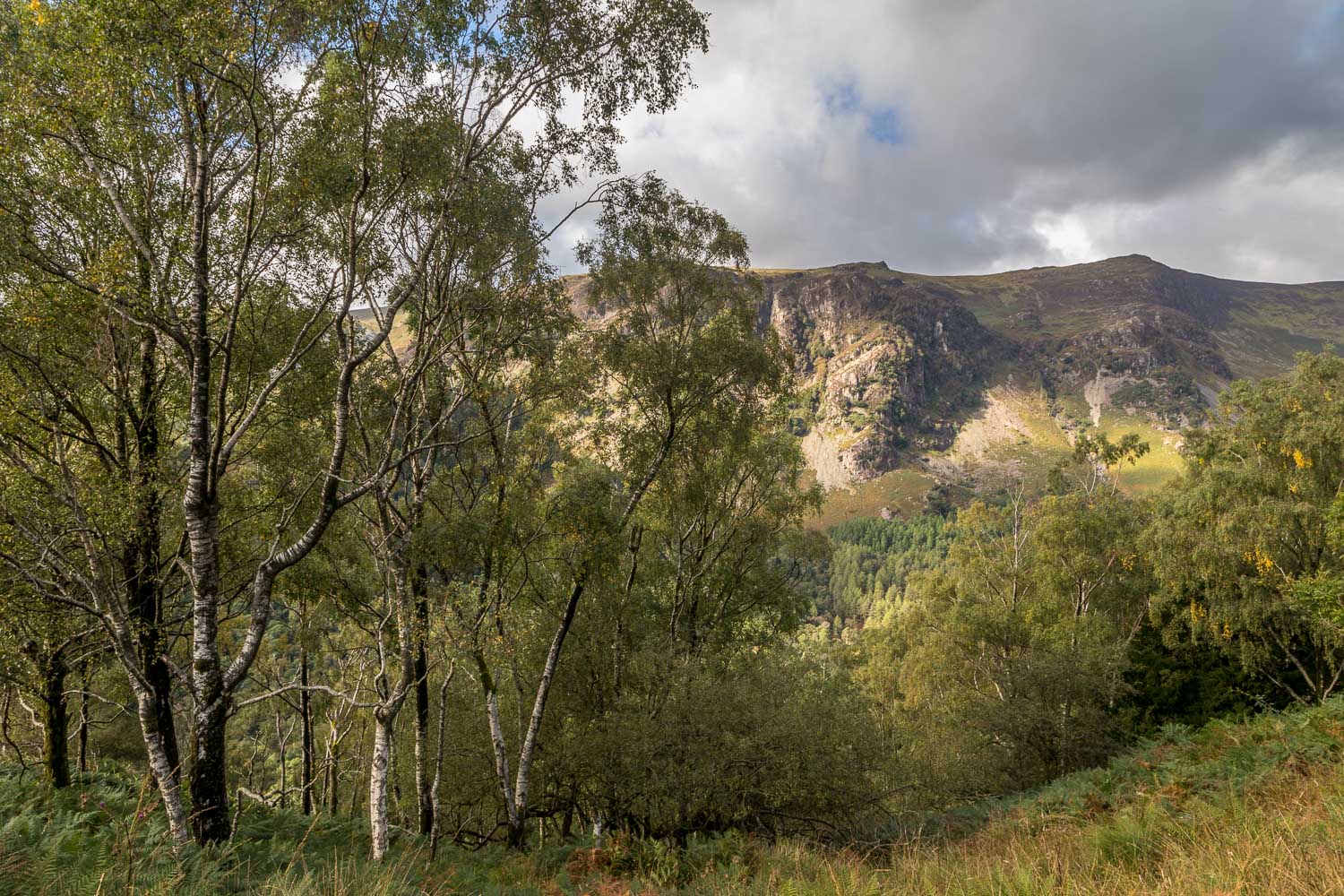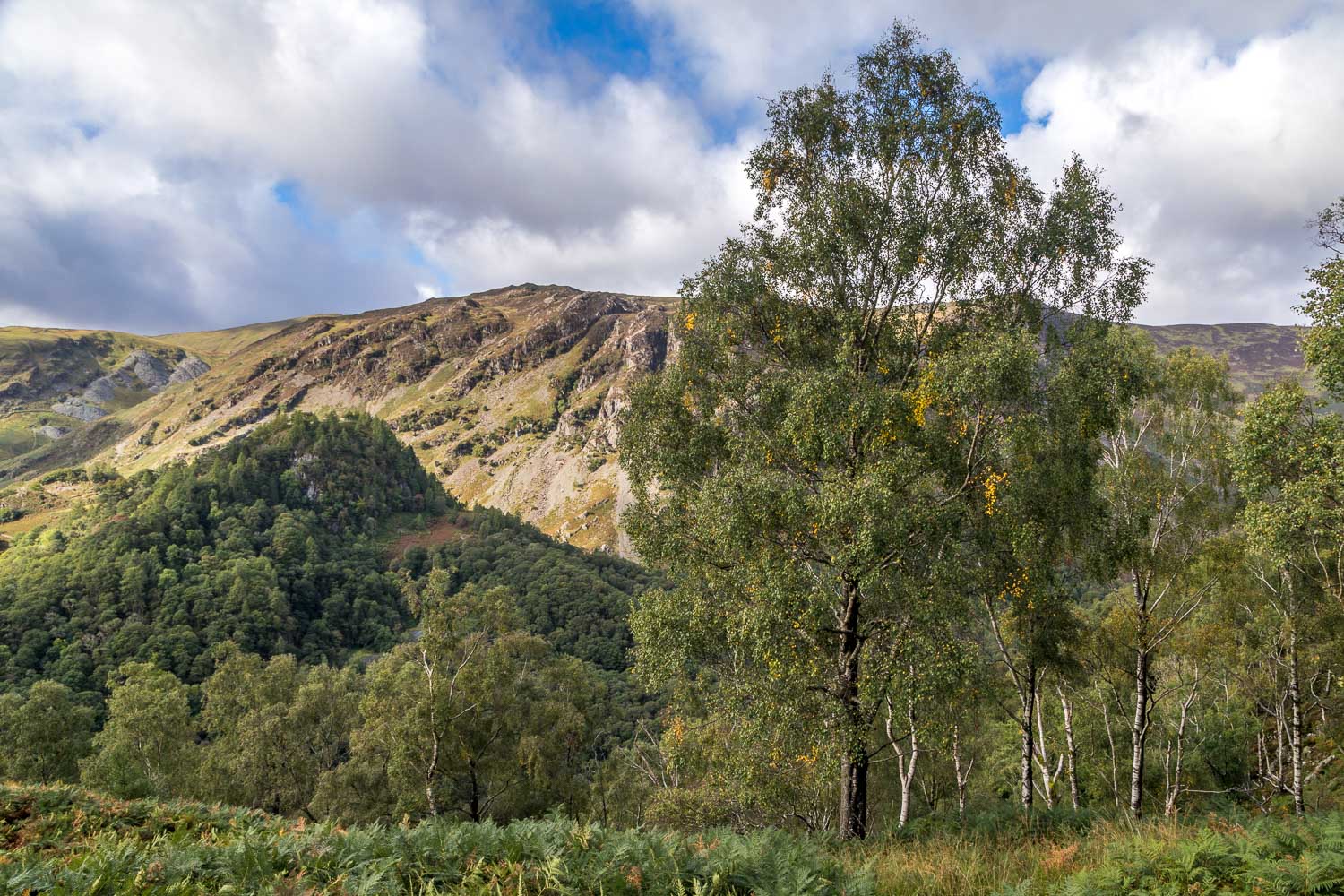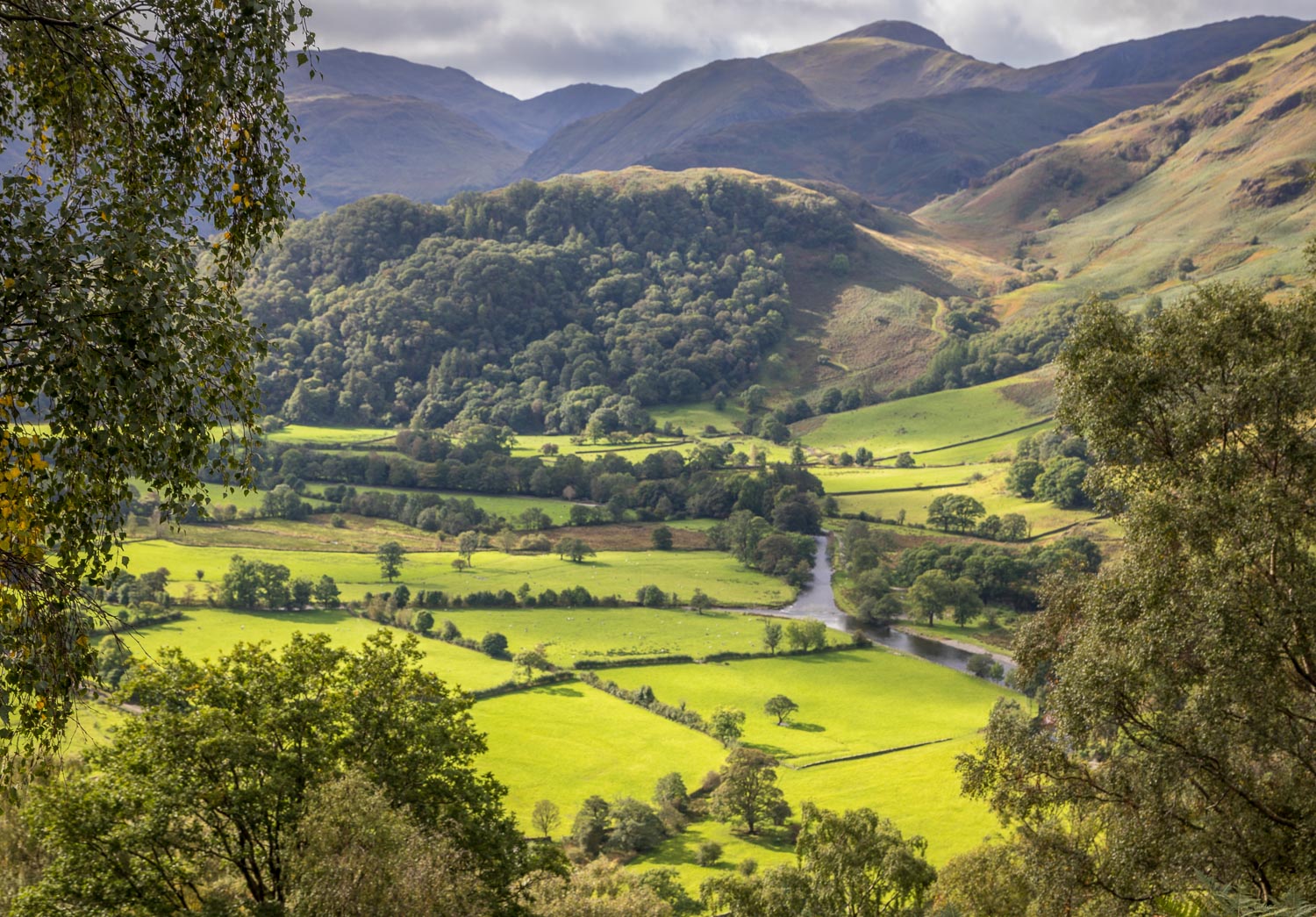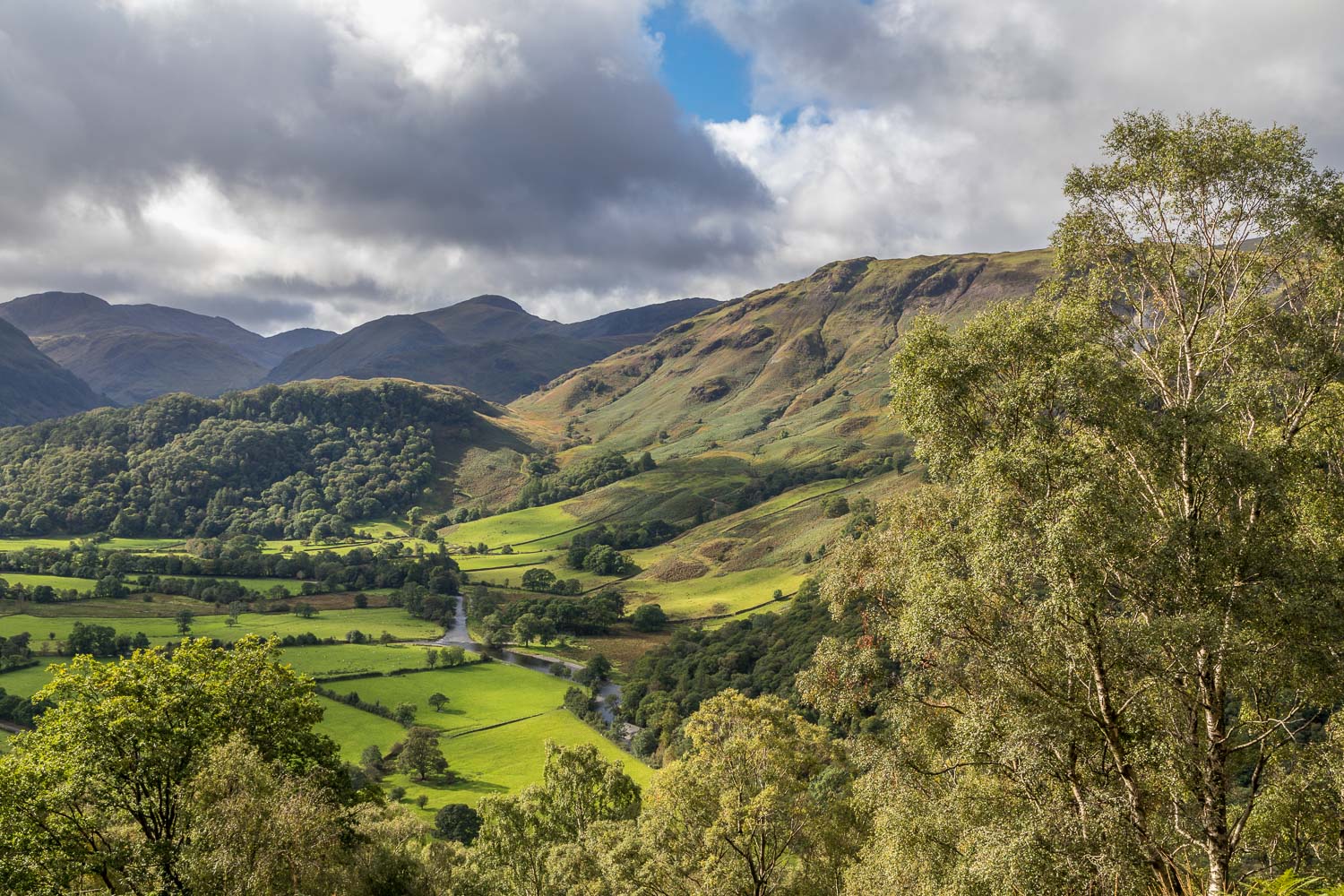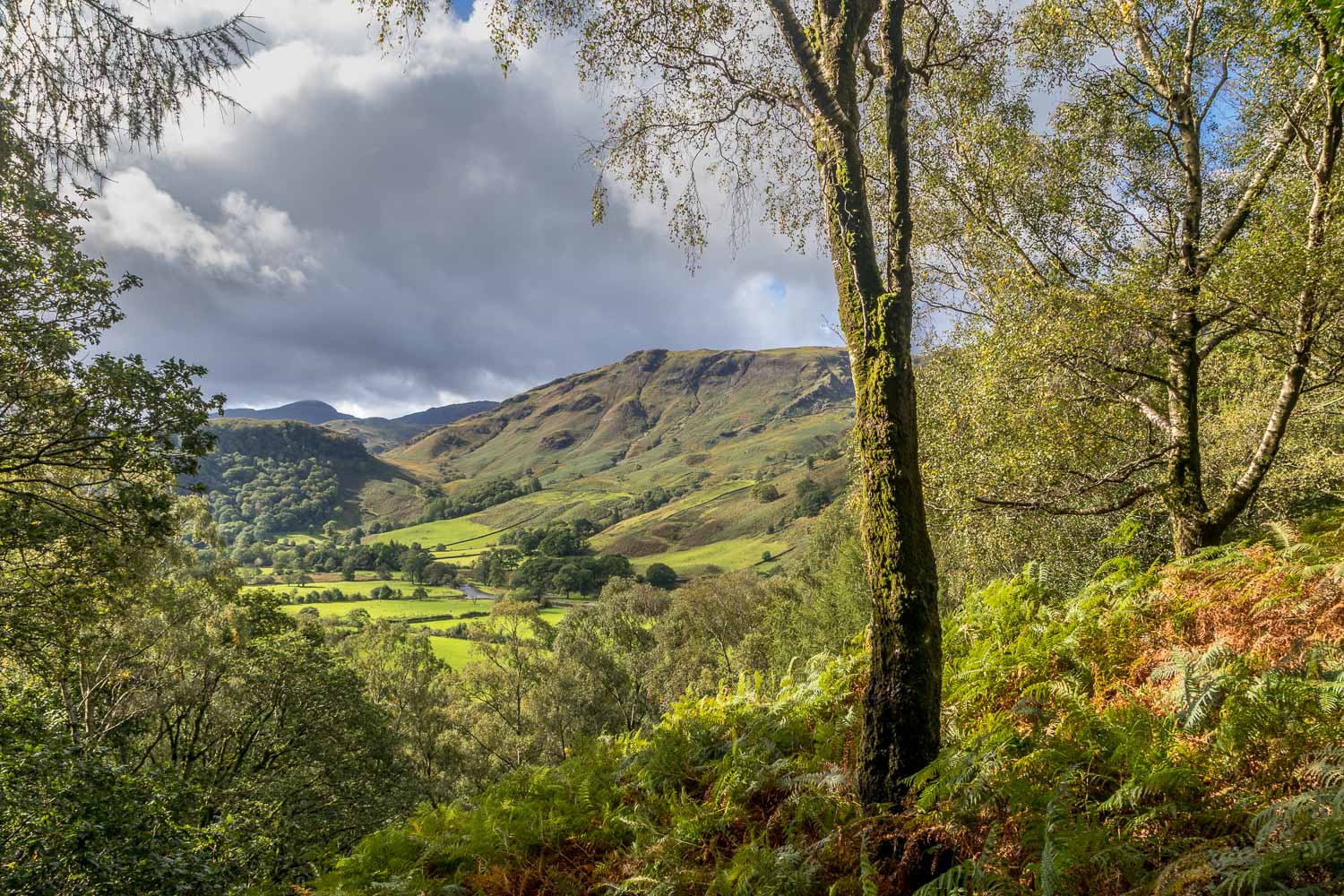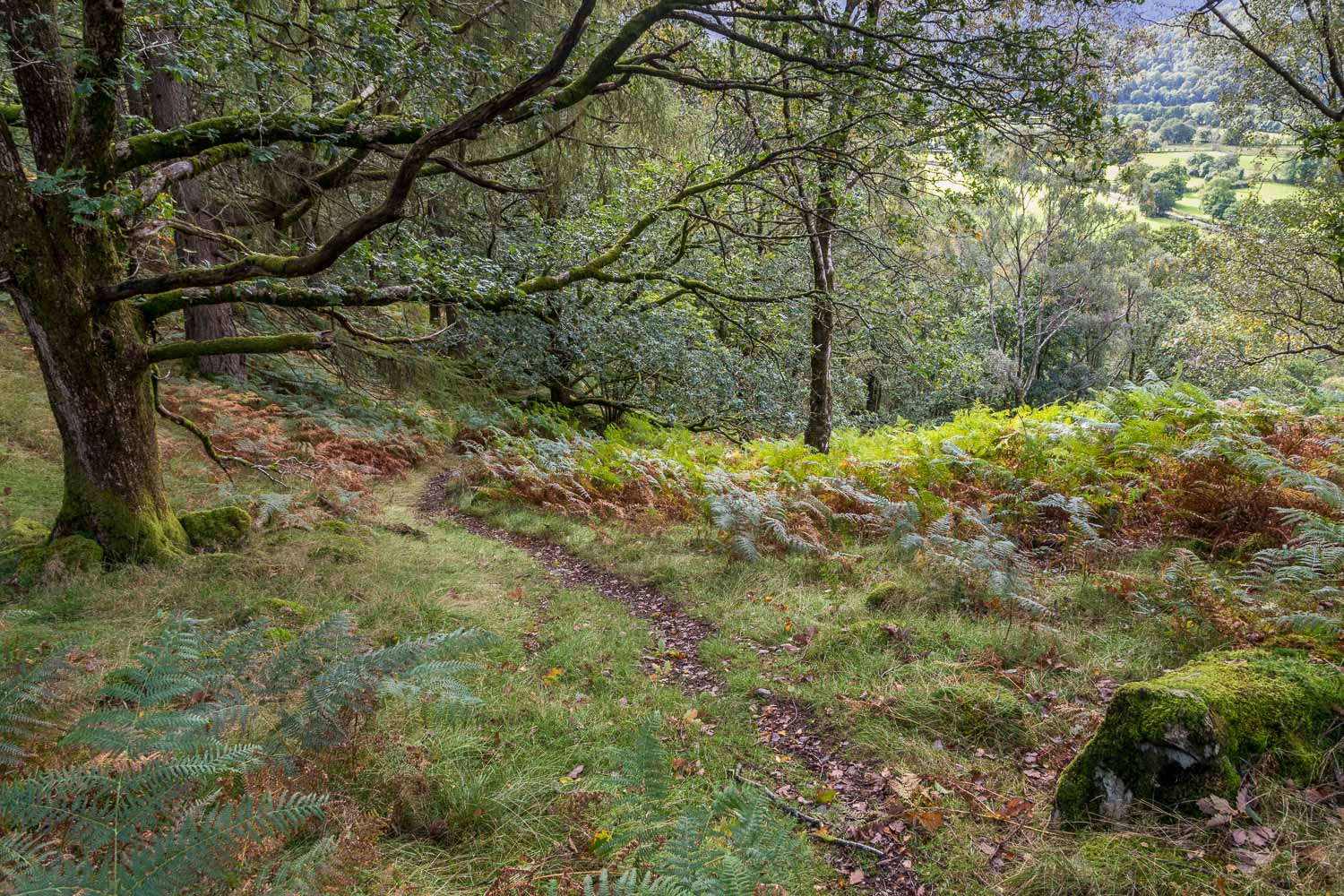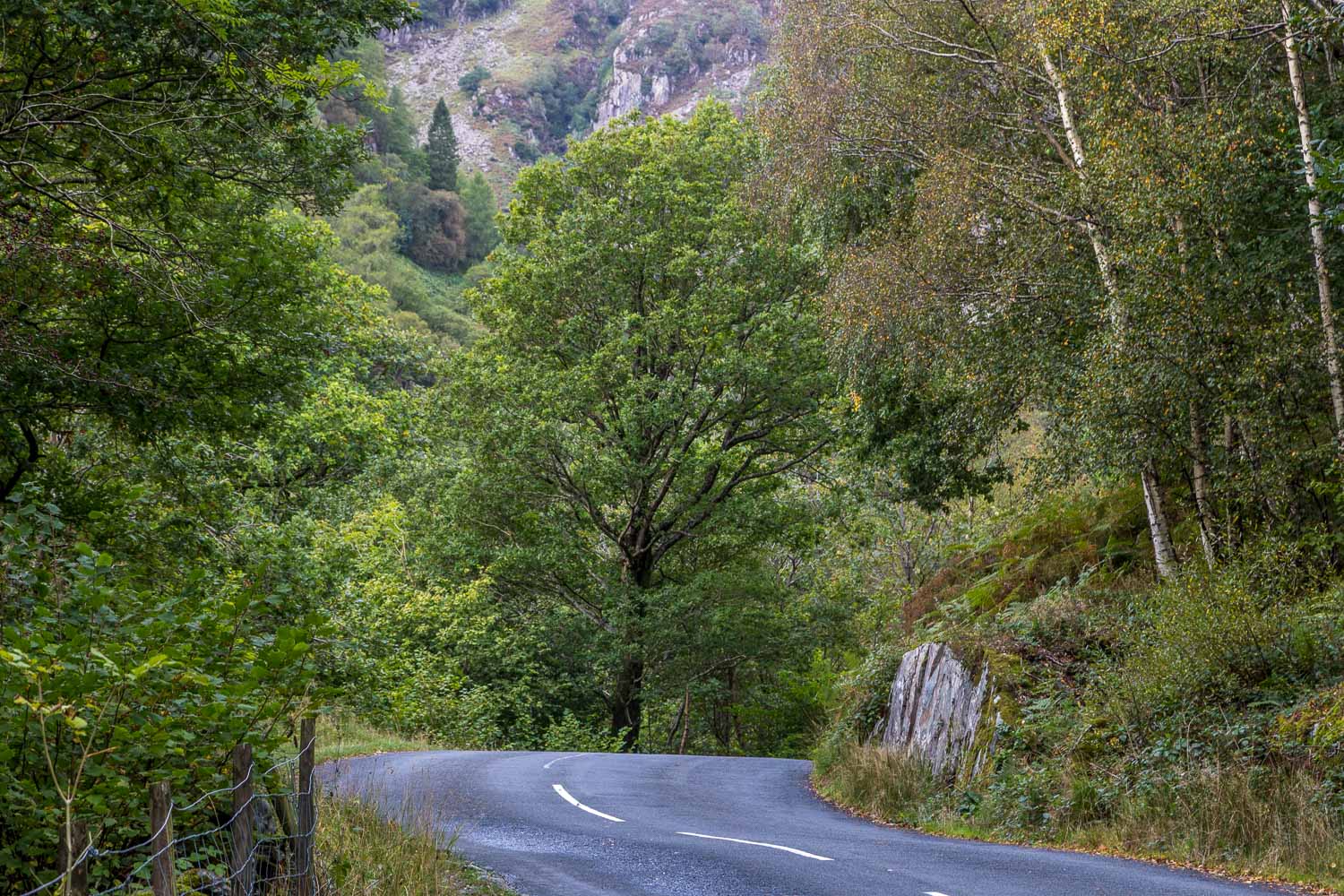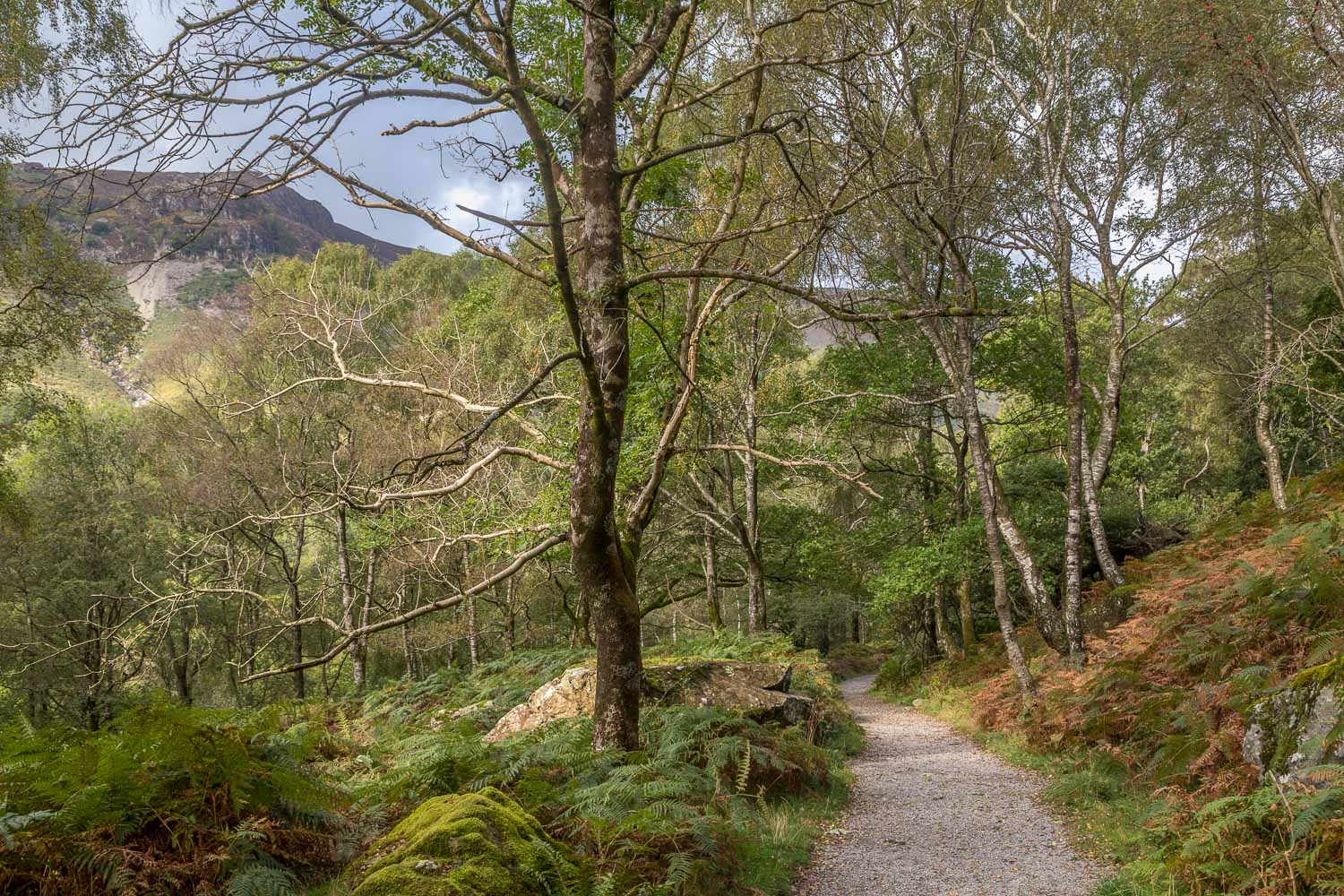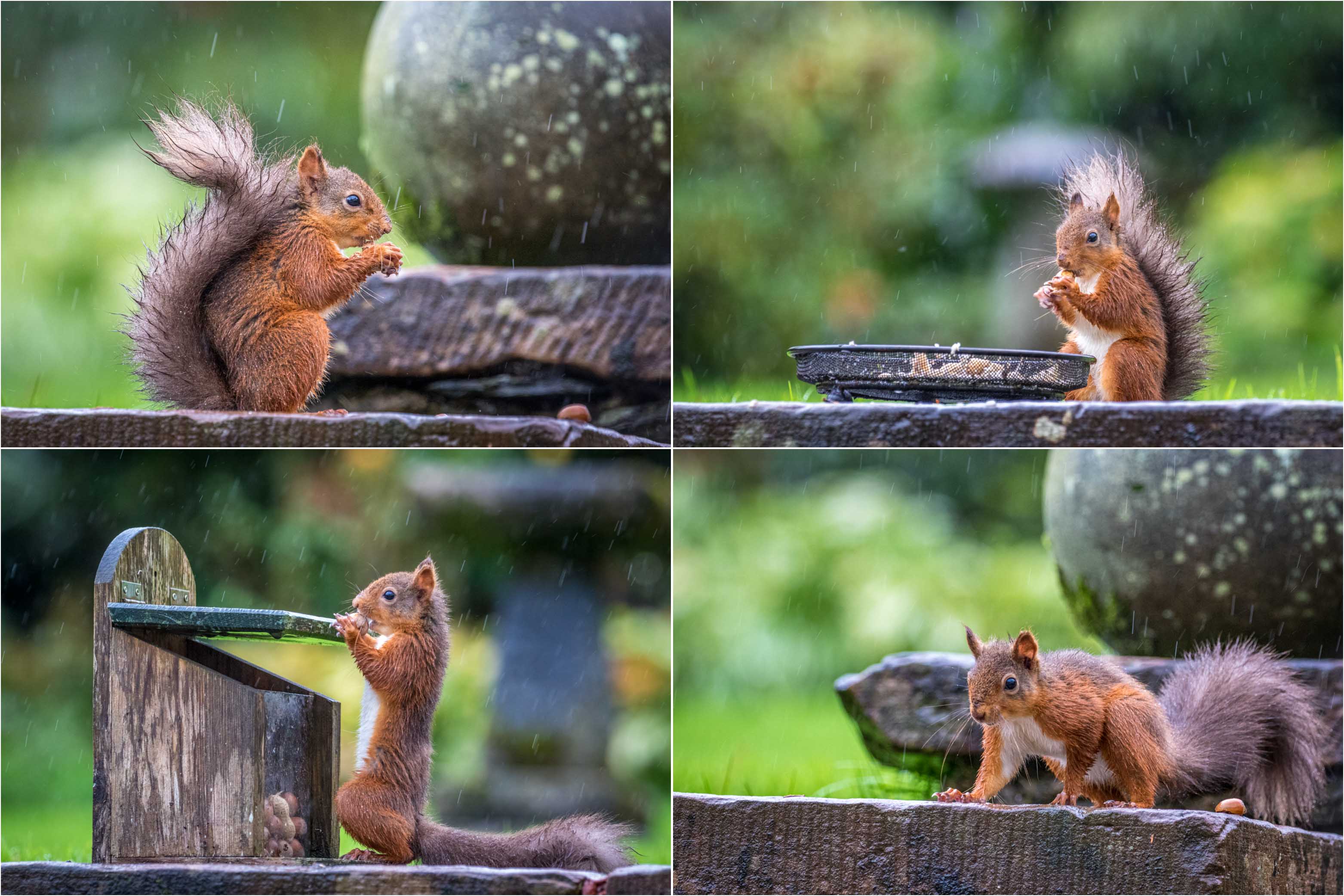Route: King’s How on Grange Fell
Area: Central Lake District
Date of walk: 29th September 2021
Walkers: Andrew
Distance: 3.5 miles
Ascent: 1,100 feet
Weather: Mixed sun and cloud, some light rain
Grange Fell is a lowly fell but what it lacks in height it makes up for in beauty, being set in the heart of Borrowdale, one of the loveliest valleys in the Lake District. It’s a superb craggy little fell with three separate widely scattered tops – Ether Knott, Brund Fell and today’s destination King’s How. I parked in the National Trust Bowderstone car park and from here followed a path which goes through ancient woodland, which is classified as temperate rainforest. The woodland path gradually curves around the steep crags above – a direct assault on the fell would be impossible for ordinary walkers
After walking through Cummacatta Wood I arrived at the steep rocky staircase which leads to Long Moss near the summit of King’s How. From the summit there is a superb view over Derwent Water looking one way and Borrowdale looking the other
A direct descent from the summit is out of the question thanks to the crags on the west, so I followed a narrow path which snakes round the other side of the fell and which descends steeply, eventually ending at the Borrowdale road. I followed the road for a short distance – there’s a narrow footpath most of the way – then crossed over at the sign indicating the Bowderstone. I followed this path through the woods, past the massive Bowderstone and back to the car park. During the course of the walk I didn’t see another soul until I arrived back near the start
For anyone following this walk, I’d mention that although the route is only 3.5 miles long, it is likely to take as much time as one twice its length. It’s best to set aside a full morning or afternoon. The terrain is rocky and complicated and there are very few sections where it’s possible to get into a proper stride. Walking poles are a very useful piece of kit to bring along
For other walks here, visit my Find Walks page and enter the name in the ‘Search site’ box
Click on the icon below for the route map (subscribers to OS Maps can view detailed maps of the route, visualise it in aerial 3D, and download the GPX file. Non-subscribers will see a base map)
Scroll down – or click on any photo to enlarge it and you can then view as a slideshow
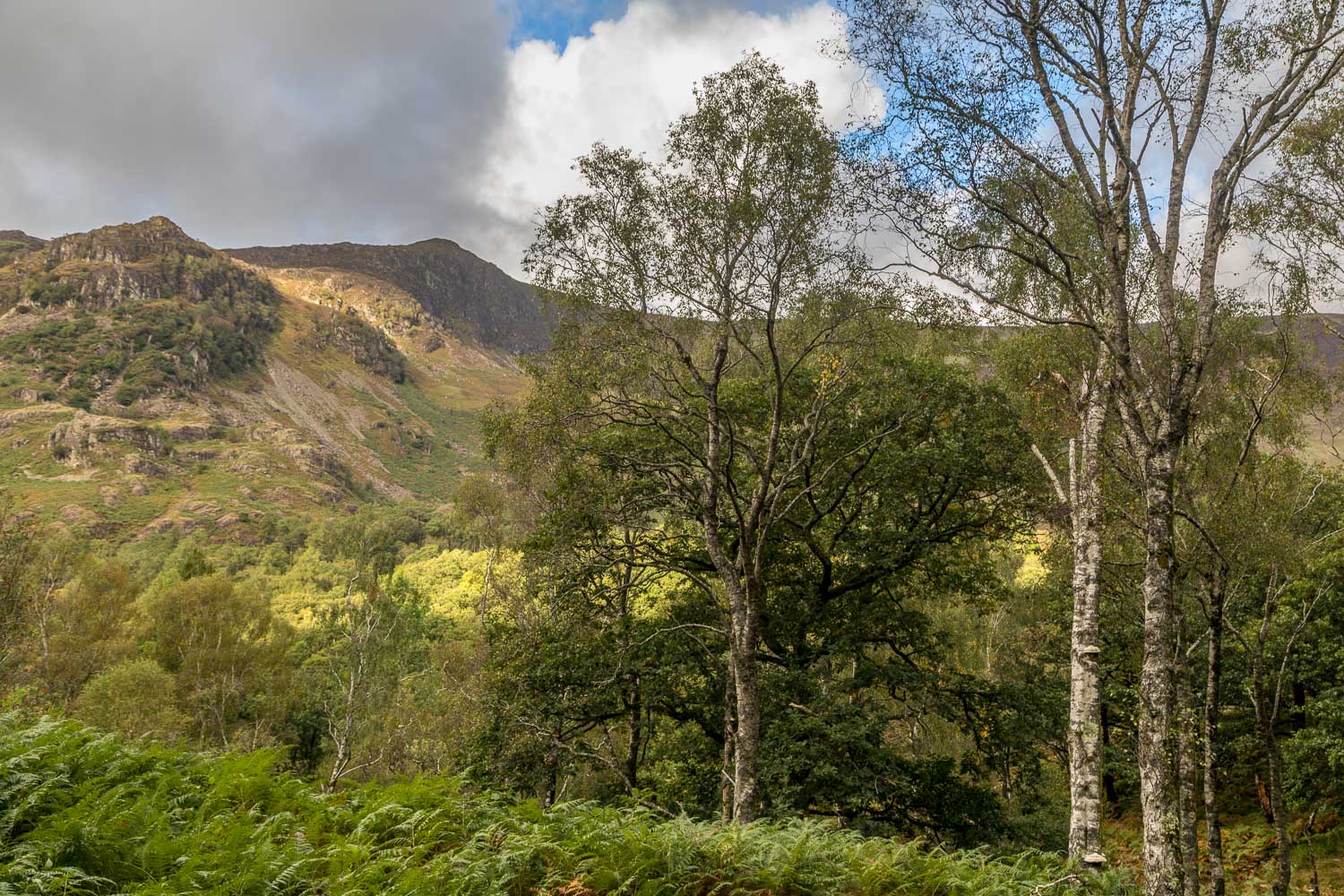
The start of the walk as I enter Cummacatta Wood from the Bowderstone car park, here looking across Borrowdale to Nitting Haws
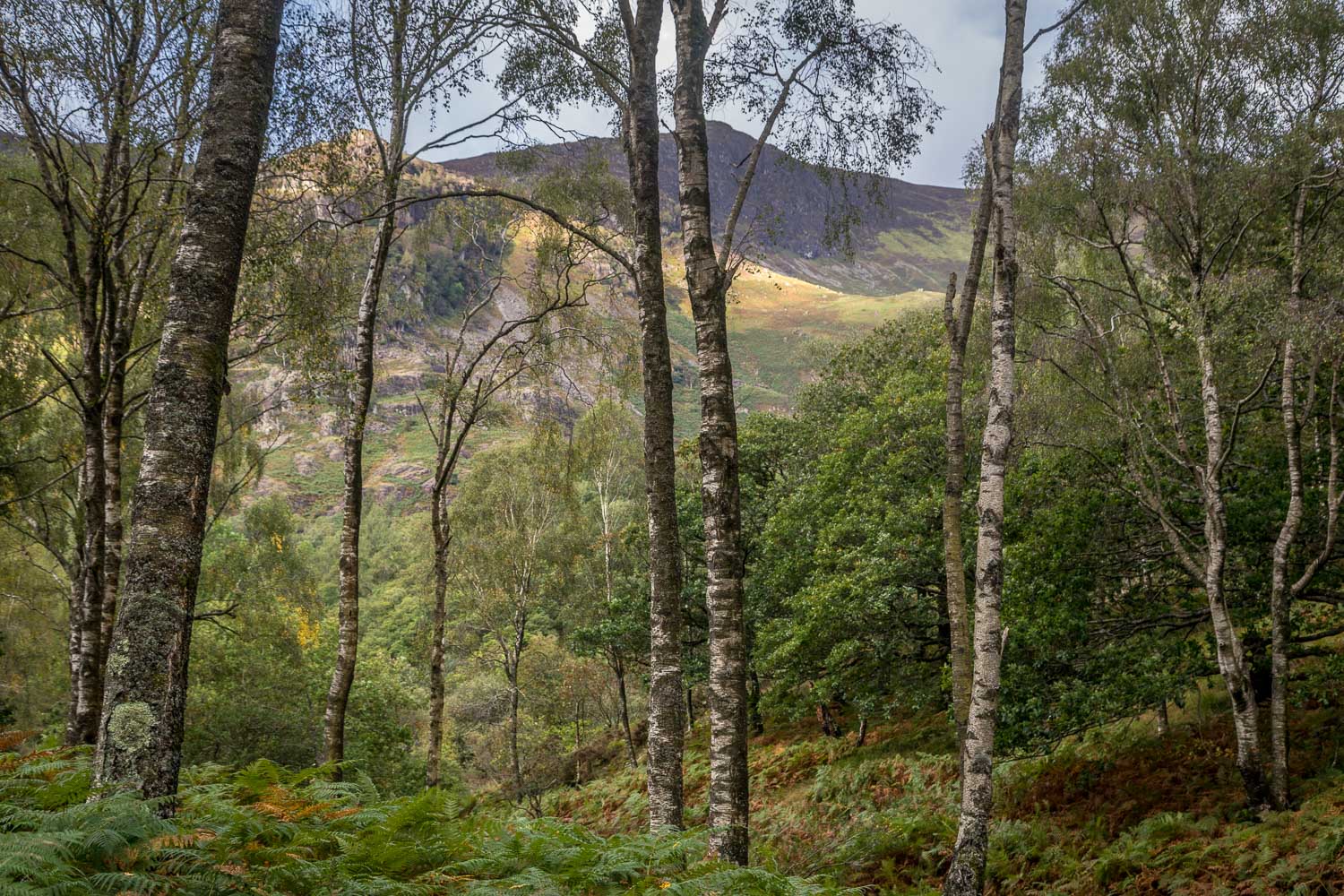
The first section of the walk takes me through ancient Borrowdale woodland, classified as temperate rainforest...
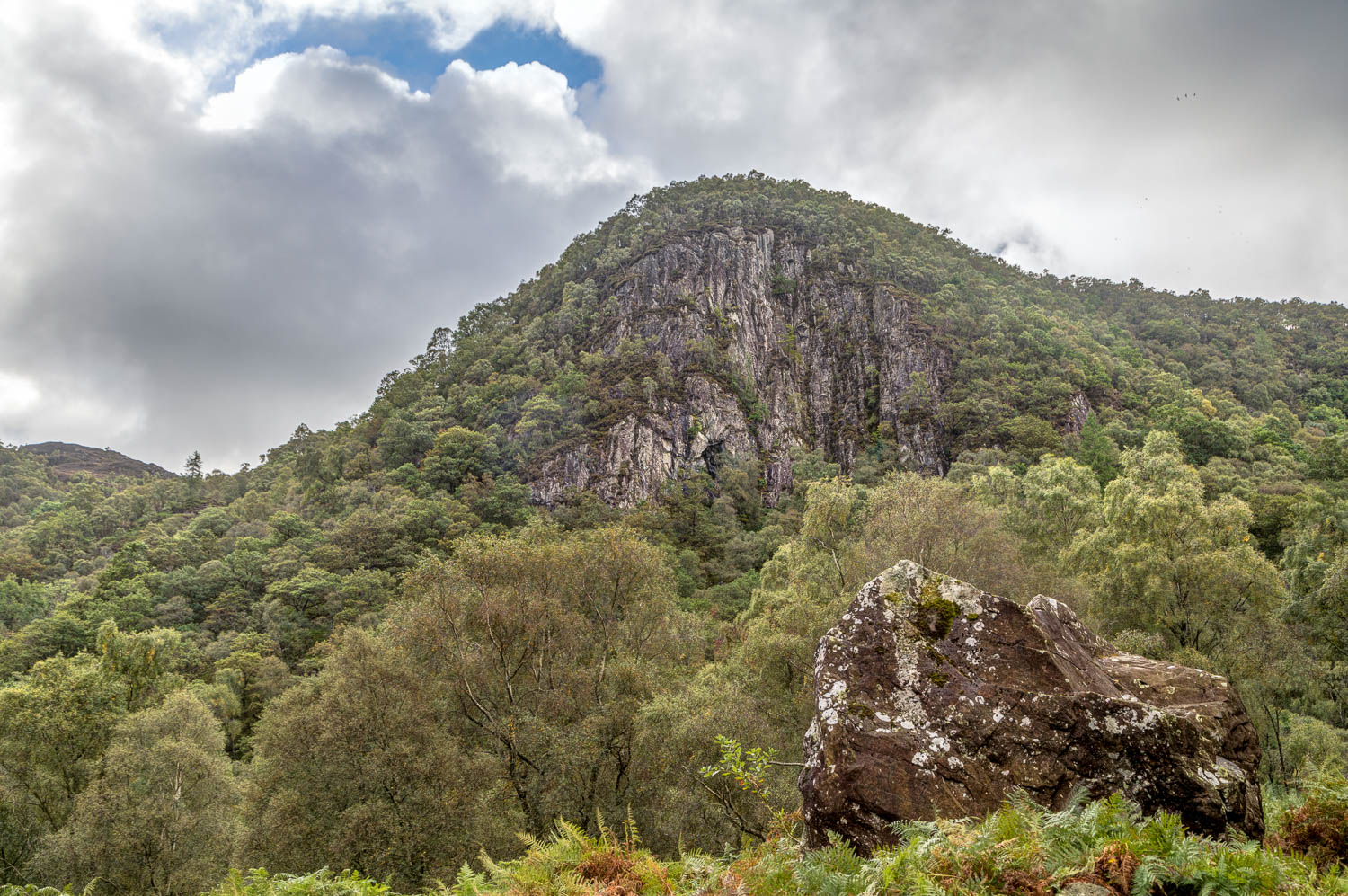
Greatend Crag below King's How and Grange Fell, illustrating why a direct ascent of the fell is not possible
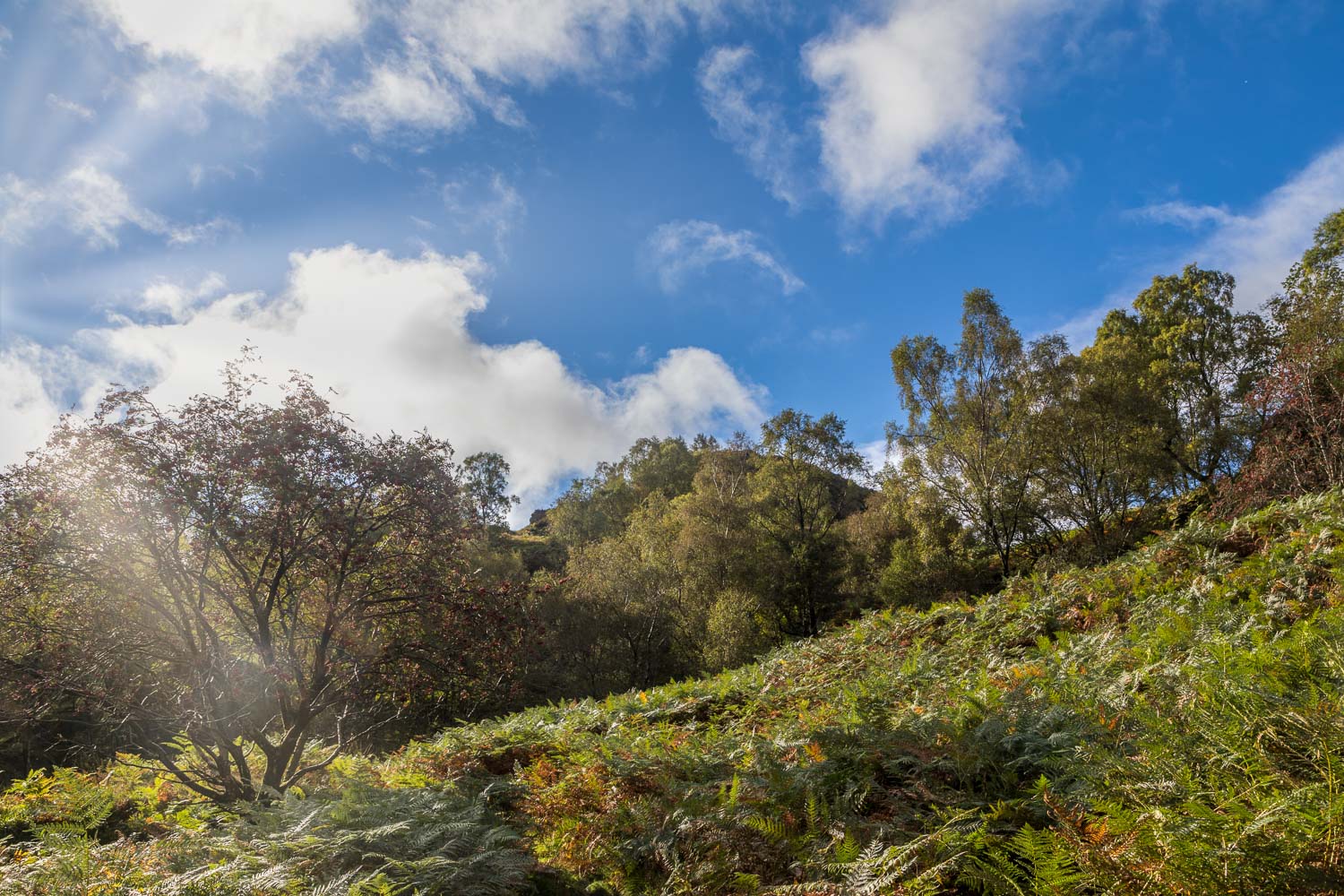
After a short but steep climb, mostly up a rocky staircase, I arrive at a flatter area below King's How
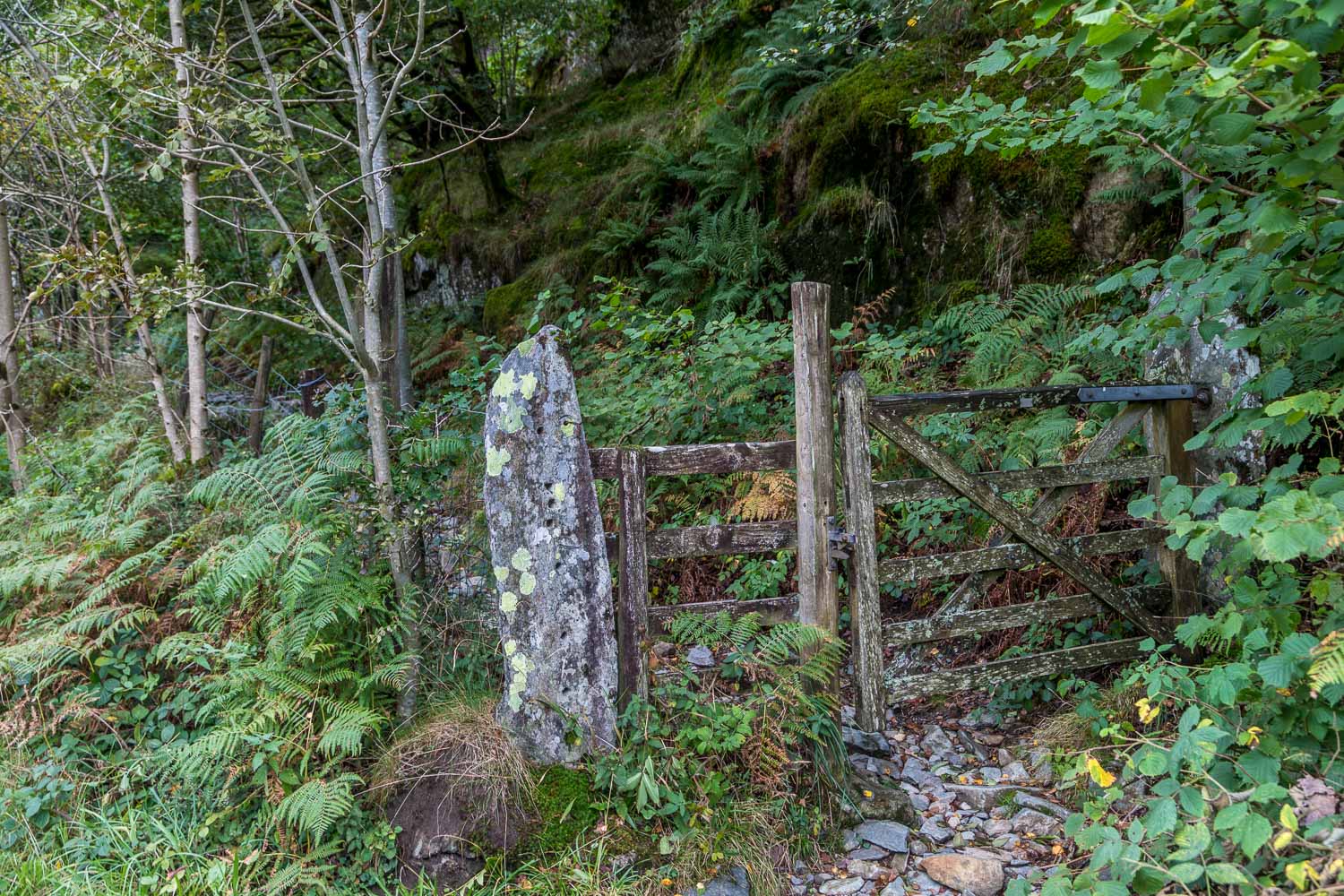
I ignore a couple of paths leading into the wood before following this one, which leads back to the start
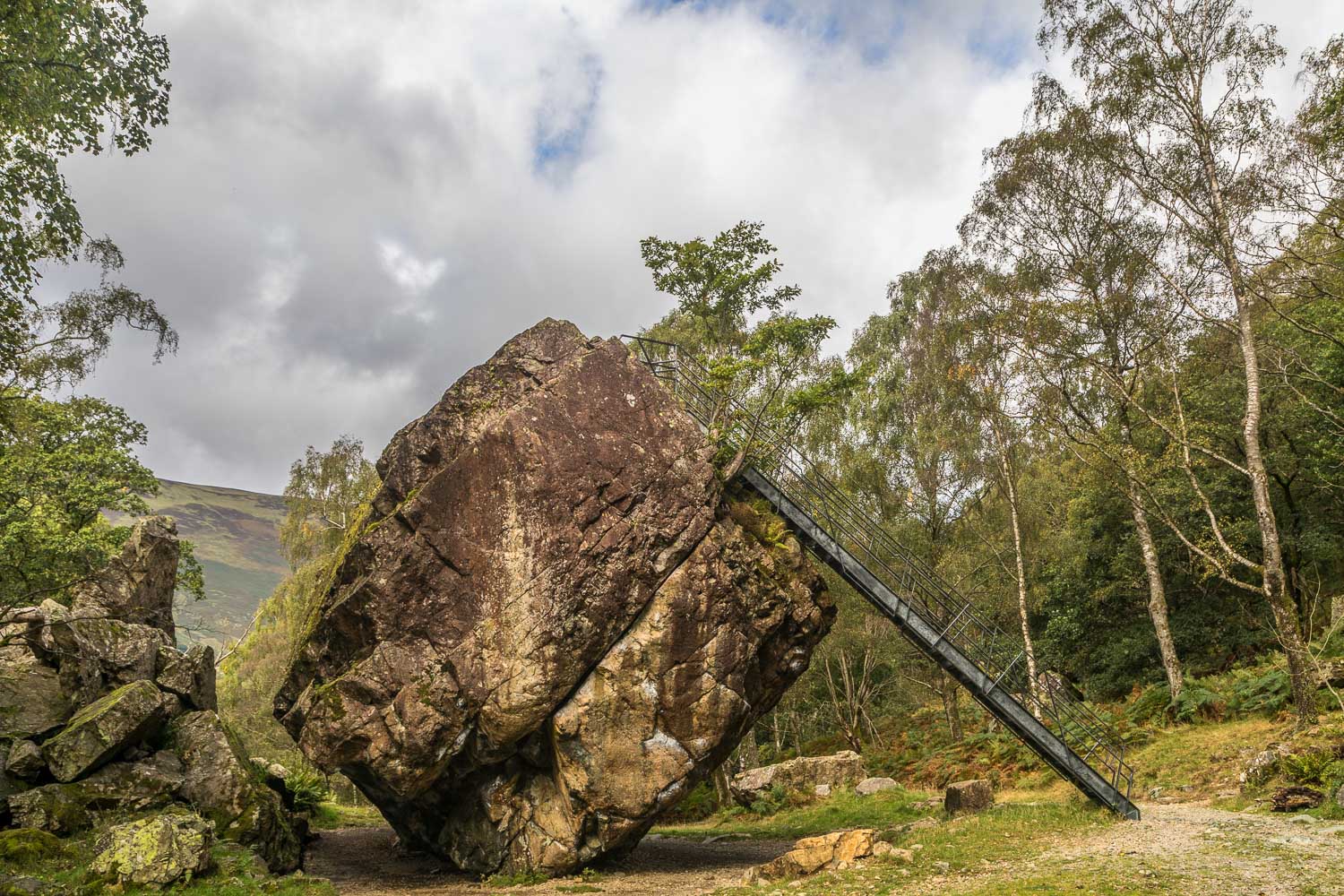
I pass by the famous Bowderstone, or Bowder Stone, with its new ladder installed in 2019. It's believed that that the rock fell from the crags above, resting in this unlikely position, rather than being left here by glacial erosion
